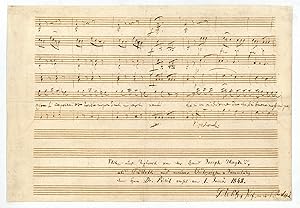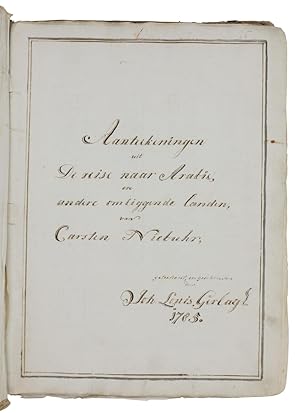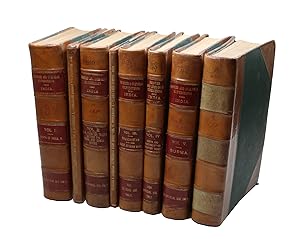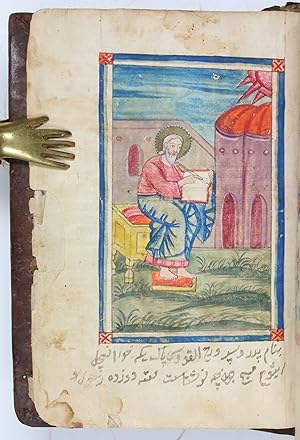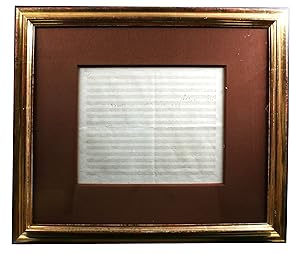14 or porno (Más de 17.000 resultados)
Tipo de artículo
- Todo tipo de artículos
- Libros (12.433)
- Revistas y publicaciones (242)
- Cómics
- Partituras (2)
- Arte, grabados y pósters (3.489)
- Fotografías (125)
- Mapas (241)
-
Manuscritos y
coleccionismo de papel (1.345)
Condición
Encuadernación
Más atributos
- Primera edición (1.815)
- Firmado (504)
- Sobrecubierta (1.176)
- Con imágenes del vendedor
- Sin impresión bajo demanda
Gastos de envío gratis
Ubicación del vendedor
Valoración de los vendedores
-
Manifest der kommunistischen Partei. Veröffentlicht im Februar 1848.
Publicado por London, gedruckt in der Office der "Bildungs-Gesellschaft für Arbeiter" von J. E. Burghard. 46, Liverpool Street, Bishopsgate, [1848]., 1848
Librería: Antiquariat INLIBRIS Gilhofer Nfg. GmbH, Vienna, A, Austria
Original o primera edición
EUR 1.750.000,00
Convertir monedaEUR 30,00 Gastos de envíoCantidad disponible: 1
Añadir al carrito8vo (205 x 137 mm). 23 pp., 1 blank p. (after which are bound 20 blank leaves). Contemporary marbled half cloth with giltstamped spine rules and title "Marx, Manif. und Katech". The founding document of communism: a previously unknown copy of the extremely scarce first issue of the first edition, owned by a Rhenish councillor of justice in the 1860s. - Of this first printing, only 27 copies are known worldwide: the 26 enumerated in Kuczynski's census and one more, sold in Hamburg in 2001. So rare is it that Kuczynski's statement, made in 1995, today requires almost no qualification: "In vain will specimens of the first edition of the 'Manifesto' be sought in the world's great libraries. Neither the Library of Congress in Washington nor the Lenin Library in Moscow, neither the British Museum in London nor the Bibliothèque nationale in Paris, not the Vatican's Biblioteca Apostolica nor Berlin's Staatsbibliothek own a copy. All that is left is held by specialist historical libraries or archives, was acquired in passing with posthumous papers or bought and sold by private collectors" (cf. p. 78). - Previous to this copy, only four examples passed through the international postwar book trade: that formerly in the collection of Salman Schocken (Kuczynski B6c: Hauswedell 211 [1976], lot 574 = Christie's Paris, 2008, lot 12); that of Eduard Wiss (B4-6b: Sotheby's 1986, lot 159 = Christie's 1991, lot 314); the Rehdiger copy (B5b: Sotheby's 2006, lot 93); and a copy unknown to Kuczynski (Hauswedell 356 [2001], lot 428). Excepting the Schocken copy, which was acquired by the British Library, none of these recently-surfaced specimens went to institutional collections, and to this date the BL remains the only major research library in the world that has succeeded in acquiring the much-coveted first edition of what is universally admitted to be "one of the outstanding political documents of all times" (PMM). Even the great Karl Marx exhibition held in 2018 at China's National Museum in Beijing to mark the 200th anniversary of Marx's birth, as well as the Chinese National Library's 2021 exhibition, dedicated specifically to the Communist Manifesto and co-hosted by the CPC's Zhejiang Provincial Committee, were unable to source a copy, although the 2021 exhibition showed no fewer than 306 versions of the book in 55 languages. - Quite insignificantly and evenly browned throughout due to paper stock. Pages 7-10 trimmed fairly closely at the lower edge by the binder's knife, leaving the last line of page 7 slightly shaved (minimal loss but still legible) and descenders of "g" and "z" barely touched on page 8. Minute paper abrasion to the word "aufgehoben" in the last line of page 14; the printed letters transferred to the opposite blank margin. A small browned rectangle in the gutter of pp. 14/15 (ca. 3.5 cm), apparently due to formerly inserted small slip of paper; light offsetting from the original ribbon bookmark on pp. 18/19. Altogether in excellent condition, showing the characteristics of variant B4-6 as called for by Kuczynski: 23 pages, p. 17 numbered correctly, misprint "heraus beschwor" in the last line of p. 6; cover variant undeterminable (but traces of the original green wrapper's colour are evident in the gutter of the title). Tantalizingly, the entirely contemporary binding's spine title reads "Marx, Manif[est] und Katech[ismus]": an uncanny echo of the work's catechetical form as originally envisaged by its authors, before Engels, in November 1847, suggested the word be abandoned in favour of "Manifesto". Is this a mere misreading of the title by the bookbinder - or was he possibly himself a member of the "Bund der Kommunisten" who was acquainted with the genesis of the work and Engels's "Communist Confession of Faith", as the draft version of the Manifesto was called? - From the library of the Elberfeld district court councillor and justice Peter Kremer with his autograph ownership in blue ink to the flyleaf, noting the edition's rarity even then: "Selten. // P. Kremer / Elberf. 14/3. [18]63". Latterly in a Rhenish private collection. - Andréas no. 1 & pp. 11f. Kuczynski, Das kommunistische Manifest (Trier, 1995), p. 87, variant Bu23 B4-6. Rubel p. 63, no. 70.1. ME-Erstdrucke p. 14, no. (1). PMM 326. Auvermann/Reiss/Sauer p. 13. Adams p. 50.
-
The viviparous quadrupeds of North America.
Publicado por New York, John James Audubon, 1845-1848., 1848
Librería: Antiquariat INLIBRIS Gilhofer Nfg. GmbH, Vienna, A, Austria
Original o primera edición
3 vols. Large folio (70 x 55 cm). With 150 striking coloured plates, all lithographed on stone, printed and coloured by J. T. Bowen of Philadelphia, after drawings by John James and John Woodhouse Audubon, and the backgrounds after Victor Audubon. Each volume also with a title-page and a list of contents. Late 19th century black morocco, with gold-tooled spine, red cloth sides and marbled endpapers. First edition of the extraordinary coloured plates of quadrupeds by the world-famous French-American naturalist and painter John James Audubon (1785-1851), whose "Birds of America" was purchased at a Christie's auction for $11.5 million in March 2000, setting a world record for the most expensive book ever sold (surpassed only by the 1640 "Psalm Bay Book", sold for $14.2 million in November 2013). The plates in the present work are considered the finest animal prints ever published in America. Unlike the "Birds", it was produced entirely in the United States, making it the "largest successful color plate book project of 19th-century America" (Reese). - After the publication of his highly acclaimed "Birds of America", Audubon settled on the Hudson River and began working on the present series to document the animal life of North America. The plates were first published in 30 parts of 5 plates each, and three separately published accompanying text volumes, written by John Bachman, appeared between 1846 and 1854. A second edition was published in 1856, but "the first edition is by far the best" (Sabin). - Title-pages show some small scuff marks, a few plates with minor, unobtrusively repaired tears along the edges. Binding skillfully restored. A complete set, with most plates in fine condition. - Nissen, ZBI 162. Buchanan, pp. 147-154. Reese 36. Sabin 2367. Cf. Howgego II, A19 (p. 15, 1846-54).
-
Biblia latina. Illuminated manuscript on vellum.
Publicado por Southern Italy, ca. 1260., 1260
Librería: Antiquariat INLIBRIS Gilhofer Nfg. GmbH, Vienna, A, Austria
Manuscrito Ejemplar firmado
4to. Illuminated manuscript on vellum. (4), 432, (38), (2) ff. With 85 beautifully historiated initials, ca. 45 plainer painted initials, and smaller initials to chapter openings painted in red or blue. 19th century full brown crushed morocco by Kerr and Richardson, Glasgow, spine lettered in gilt. A lavishly illustrated, complete quarto Bible manuscript from southern Italy, decorated in the later 13th century, around the time of Emperor Frederick II. The content and order of the various books correspond entirely to those common for 13th century small-format Bibles. A highly unusual survival: portable Bibles were not usually illuminated (only a third of French manuscripts contains illustrations), and Italian examples are especially rare. Indeed, a survey of 1500 small-sized Bibles revealed that only 16% were (northern) Italian, mostly from Bologna. - A group of Dominican friars is painted in the initial at fol. 204r, attesting to use by a Dominican community. The friars are shown chanting the psalm "Cantate Domino", reading the music from a codex opened on the lectern and wearing the white habit of the Order under the cloak. - The manuscript displays an amazing variety of initials, all different from each other and painted in bold colours. As Prof. Milvia Bollati (Università Cattolica del Sacro Cuore, Milano) has kindly pointed out, they are stylistically close to those of the Manfredi Bible in the Vatican (MS. Vat.lat.36), the famous Bible written and decorated for Manfredi, son of Frederick II, Prince of Taranto and later King of Sicily (1258-66). The scriptor Iohensis who signed that Bible is also known for the transcription of two other manuscripts, "De balneis Puteolanis" (now in Rome, Bibl. Angelica, MS 1474) and a Bible now in Paris (BnF, MS Lat. 40), both illuminated by the same Master of the Manfredi Bible. This illuminator counts as one of the most outstanding masters active at the Hohenstaufen Court, and several other manuscripts, mostly Bibles, have been attributed to his hand (Paris, BnFrance, MS Lat. 401, MS Lat. 104282, MS Lat. 2173; Palermo, Bib. Cent., MS I.C.13; Trento, Bibl. Comunale, MS 2868; Turin, Bibl. Univ., MS E.IV.14; London, BL, Add. Ms. 31380; Bourges, Bibl. Municip., MS 5). This entire group is the production of an atelier, and many artists may be identified as having collaborated on any single manuscript. Notably, our Bible shares with this group the characteristic decorative motifs of the historiated initials and similar stylistic features; it also shares with the Manfredi Bibles group the mise-en-page and elegant pen flourishes. Another feature relating to this series of precious illuminated Bibles is the extraordinary iconographical variety in the illustrations. Stylistic affinities therefore suggest that the anonymous illuminator may have belonged to the circle of the Master of the Manfredi Bible. While the manuscript contains no original provenance information beyond the use by a Dominican community, it may be conjectured that this Bible could have been in use by the Dominican convent in Palermo or the San Domenico Maggiore convent in Naples, where the Studio Maggiore was located. The use of portable Bibles is well documented within Mendicant orders, and in particular by Dominican friars for their preaching activity. - In splendid condition; a single miniature (in fol. 223v) has been excised. The six leaves of lection lists at the front and back of the volume, explicitly mentioning Dominican use, must have been added in a separate, though still early phase of production, since in these alone are the blue capitals executed in azurite, instead of the mineral lapis lazuli used consistently throughout the main body of the book. The manuscript and the colours used for the illumination have been examined by the interdisciplinary "Team Pigment" project at Durham University, headed by Professors Andrew Beeby (chemistry) and Richard Gameson (history), confirming that the pigments and workmanship are wholly consistent with having been produced in Italy during the second half of the 13th century, and ruling out any evidence of modern retouching. A 19th century handwritten description of the MS in Italian and English, erroneously dating it to "Secolo XIV", is loosely inserted at the back of the volume. A full collation of the Bible's books, as well as a spectroscopic and photomicroscopic analysis, are available on request. - Cf. Dizionario biografico dei miniatori italiani, ed. M. Bollati (Milan, 2004).
-
Document.
Publicado por Ravenna, April 1226., 1226
Librería: Antiquariat INLIBRIS Gilhofer Nfg. GmbH, Vienna, A, Austria
Manuscrito
Latin document on vellum with plica. 34 lines, ruled in blind. Ca. 480 × 446 mm, carefully trimmed, with seal in dark brown wax, ca. 98 mm in diameter, fastened on a red silk cord drawn through three lozenge-shaped holes in the plica. 2 horizontal and 3 vertical folds; in excellent state of preservation. A severely rubbed dorsal inscription, probably dating from the 14th century (P[rivilegium] imp[er]iale sup[er] [?]), followed by additional early modern dorsal inscriptions (illegible). Stored in custom-made half morocco box. Extremely rare, exceptionally well preserved ceremonial document, lost since 1782. At the request of abbot Conrad, Emperor Frederick II confirms the privilege granted to St Paul's Abbey, Lavanttal, by his grandfather Frederick Barbarossa on 19 March 1170, in which the latter bestowed his protection on the monastery, awarding it sole tenure of Völkermarkt, and specifiying rules regarding the Abbey's stewardship and against enfeoffment. This privilege was intended to protect the economic power of the monastery from regional forces in the difficult times of the early 12th century. Frederick II confirms this privilege, additionally authorising the Abbey to use all silver, lead, and iron ore mines within its demesnes - a very important right in the Alpine area of the early 13th century. - This is a typical and perfect example of Frederick's ceremonial documents. Palaeographical analysis confirms that it is written by the scribe Iacobus de Catania, as Klaus Höflinger had long suspected without then having access to the original; several ornaments were clearly contributed by the notary Iohannes de Lauro, while other elements are the work of anonymous helpers in the chancery. The unambiguous identification of two principal chancery officials from the early years of Emperor Frederick II proves the document's authenticity, which is further underscored by the use of a seal typarium first attested in March 1226, probably created soon after the marriage between Frederick II and Isabella, heir to the Kingdom of Jerusalem, on 9 November 1225. Only the border of the seal has been chipped away on the left and bottom, but the inscription remains well legible in oblique lighting. The seal is thus one of the very earliest to name Frederick as King of Jerusalem. Frederick holds special relevance for the history of the Crusader state due to his Fifth Crusade, a venture undertaken without enthusiasm and brought to an end not by military means, but, uniquely, through a peace treaty with the Sultan in 1229. Only a very small number of well-preserved seals of Frederick survive from this period. In spite of its defects, this is one of the best early impressions of typarium 9. - The document was hitherto known only in two copies: in a notarial instrument from 1442 by the notary Urban Peinsteiner, issued at the orders of abbot Johann I Poschenbeuter (now in Vienna's Haus-, Hof- und Staatsarchiv), the Imperial confirmation privilege is inserted, together with a description of the seal, but it lacks the signum line as well as that of the inserted Barbarossa document. An original transumption for Ferdinand II from 1625 (in the archives of St. Paul's Abbey) cites both signum lines as well as the rulers' monograms. These copies are both based directly on the present original. - The document was missing without a trace at least since the monastery was dissolved by Emperor Joseph II in 1782/87. That this important document, preserved in such fine condition, has now resurfaced from a private collection is to be regarded as nothing less than a sensation: for decades no ceremonial diplomas by Emperor Frederick II have been seen on the market. The only other example, a ceremonial diploma by Frederick II, sold from the Adam collection by Tenner in 1980 (sale 126, lot 127: 19,000 German Marks, to H. P. Kraus), was in poor condition and lacked the seal. In similarly poor condition and also without the seal was the Frederick Barbarossa document which commanded 160,000 Swiss francs before premium and taxes at Stargardt's 2003 Basel sale (lot 30). The cataloguers were then able to trace in the previous century of trade no more than nine documents by any emperor from the Saxon to the Hohenstaufen period. - The present document has been examined by Professor Dr Mark Mersiowsky of the University of Stuttgart, editor of the documents of King Henry (VII), the son of Frederick II, for the Diplomata series of the MGH, and we are indebted to him for the description. - Copy in notarial instrument of 1442 IV 6 (HHStA, AUR; olim: an. 1441 Lad. 27 Nr. 89). Copy in original transumption by Emperor Ferdinand II from 1625 VIII 1 in St. Paul's Stiftsarchiv (Carinthia). U 1092, fol. 9-13. - Schroll, UB St. Paul, p. 117f. no. 50. Winkelmann, Acta l, p. 249, no. 274. Mon. hist. ducatus Carinthiae IV/1, p. 153.f, no. 1902. DF. II. 1160 pp. 550-53. Böhmer, Reg. Imp. p. 131, no. 571. HB 2, p. 558. Ankershofen, in: AÖG 27, p. 170, no 274. Dobenecker, Reg. dipl. Thuringiae 2, p. 409, no. 2293. Clavadetscher, Chartularium Sangallense 3, p. 146 no. 1117. BFW 1600.
-
Neue Liebe, Neues Leben". Autograph musical manuscript.
Publicado por [Vienna, 1798-1799]., 1799
Librería: Antiquariat INLIBRIS Gilhofer Nfg. GmbH, Vienna, A, Austria
Manuscrito
Oblong folio (ca. 316 x 226 mm). Brown ink on paper, 16 staves (Johnson, Tyson & Winter Nr. 2). 3 pp. on 2 leaves (separate, second leaf mounted to a cloth stub with another, blank sheet of contemporary paper). A total of 217 measures (omitting preludes) with deletions and corrections throughout. Stored in custom-made red morocco portfolio with cloth interior flaps and brass applications on both covers (342 x 248 mm). First draft for the lied "Neue Liebe, neues Leben", a setting of a 1775 poem by Johann Wolfgang von Goethe, begun in late 1798. The present sketch, jotted down without interruptions in a very cursory, almost rushed hand already contains the melody and the words with no expression markings, but includes occasional bass sections as well as parts of the piano accompaniment at the end of verses; it shows several important departures from the version printed in 1810. At the head of the page, written in a different ink and pen and comprising the first four staves, are the first eight bars of the finale of Beethoven's String Quartet No. 1 in F major (Op. 18, No. 1, composed between 1798 and 1800, published in 1801), providing the violin voice with the theme chorus of triplets. - The lied in its present version (WoO 127) was published in early 1808, nearly a decade after this first sketch, by Simrock in Bonn as the first part of the "III deutsche Lieder", apparently without the composer's consent. Beethoven subsequently revised his work (the manuscript of that revision, dated "1809", is today kept at the Beethoven Haus in Bonn) and published it the following year with Breitkopf & Härtel in Leipzig as part of his "Sechs Gesänge" (Op. 75, No. 2). "Il s'agit du monologue d'un amant que la rencontre d'un nouvel amour a bouleversé au point de ne plus savoir où il en est : sa tentation est alors de fuir ce qui le rend étranger à lui-même" (E. Brisson). In 1811 Beethoven presented a manuscript copy of that second version, the first leaf of which is also kept in Bonn (while most of the remainder is at the Pierpont Morgan Library in New York), to Bettina Brentano on the occasion of her wedding to Achim von Arnim. Nohl has pointed out that the present first draft with its "dramatic, aria-styled phrasings" retains a somewhat "grandiose and dark quality" as compared to the reduced later version, and "if one were to interpret the urgent stride so vividly apparent in this sketch, dashed off, as it seems, without a single interruption and in a mood of deep emotional excitation, then one feels instinctively that forces of an even greater passion than such as Bettina could have aroused in Beethoven must have been at work here" (cf. p. 695). - Occasional quite insignificant brownstaining; altogether very crisp. Both leaves annotated with Beethoven's name in a near-contemporary hand. At the head of the first page is the "mysterious caption" (cf. Nohl), also by a different, early hand: "Der Schluß von seinem letzten Septuor als Motto für den Text" (apparently referring to Beethoven's Septet, Op. 20, also written in 1799; a tentative explanation is advanced by van der Zanden, p. 168). - Beethoven manuscripts written before 1800 almost never come to market; no other complete autograph manuscript of this version is known. The two leaves formerly were a single bifolium owned by baroness Anna von Gleichenstein, the sister of Beethoven's friend Therese Malfatti (remembered as a possible dedicatee of "Für Elise"), which was soon separated. Even in 1865, when Nohl edited the first leaf, its counterpart was no longer in the possession of the Gleichenstein family. The first sheet later surfaced in the archives of the music publisher Schott in Mainz and was sold at Sotheby's in 2002 (6 December, lot 14: £65,725). The second leaf was offered in 1968 by Hans Schneider of Tutzing in his catalogue 136 (lot 37, DM 17,800; then again in cat. 142, lot 266, with illustration on p. 45) and was acquired in 1969 by a private collector who had it auctioned by Venator & Hanstein in Cologne in 2011 (cat. 118, lot 861: EUR 108,000). Now that both leaves have been reunited, Hans Schneider's words, written half a century ago about only the final 62 measures, are no less true: "Through Beethoven's synthesis of his own music with a text by Goethe we are presented with a musical autograph as desirable as it is beautiful" (cat. 136, p. 37). - WoO 127. Beethoven, Werke (Neue Ausgabe), Abt. 12.1, Lieder und Gesänge mit Klavierbegleitung. Kritischer Bericht (Munich, 1990), no. 18, pp. 20f., and cf. no. 41, pp. 47-49. Ludwig Nohl, "Eine Beethoven'sche Skizze", Recensionen und Mittheilungen über Theater und Musik 44 (4 Nov. 1865), pp. 695-697 (an edition of the first leaf only). Max Unger, "Neue Liebe, neues Leben. Die Urschrift und die Geschichte eines Goethe-Beethoven-Liedes", Zeitschrift für Musik 103.9 (Sept. 1936), pp. 1049-1075, here at pp. 1060-1062. Jos van der Zanden, "The Shakespeare Connection: Beethoven's String Quartet Op. 18 No. 1 and the Vienna Haustheater", Eighteenth-Century Music 18.1 (March 2021), pp. 151-170, here at p. 168 note 106.
-
Beytrag zur Naturgeschichte der Vögel. Vols. 1, 4, 5, and 6 (of 6).
Publicado por Vienna, Selbstverlag, 1790-1795., 1795
Librería: Antiquariat INLIBRIS Gilhofer Nfg. GmbH, Vienna, A, Austria
Ejemplar firmado
4to. 4 vols. (10), 20 pp. (10), 40 pp. (14), 33 pp. (12), 19 pp. With 2 watercoloured and 4 coloured engraved coats of arms, 1 coloured engraved dedication plate, 183 (instead of 186) plates of birds, 15 of which in watercolour and 168 on splendidly illuminated engraved plates, partly heightened in gold, silver and copper, with lavish watercolour borders. Contemporary glazed red morocco binding with double gilt engraved spine labels, splendid floral spine and cover gilding. Vols. 4-6 with coloured armorial supralibros to upper covers. Calico endpapers, all edges gilt. Unique copy of one of the rarest works of zoological book illustration, from the library of the banker, art collector, and patron Moritz von Fries (1777-1826), for whom the set was in all likelihood specially produced. Around 1800, Fries was considered without doubt the richest man in the Habsburg monarchy. The splendid engraved plates were elaborately illuminated, each with rich botanical and architectural decoration extending even beyond the engraved matter. In addition, the copy at hand was enhanced by 15 original watercolours (all in vols. 5 and 6), whereas the regular copies include merely prints. The only verifiable complete copies, in the Austrian National Library (ÖNB) and the Bavarian State Library (BSB), show less splendid decoration, with only three watercolours each in the respective volumes and no watercolour borders whatsoever. The Fideicommissum collection in the ÖNB holds 5 illuminated volumes of Spalowsky's work, with volume 5 containing the highest traceable number of watercolours among all copies available for comparison. As the final volume is lacking in the Fideicommissum collection, the eight watercolours and splendid framings of vol. 6 of Fries's copy are probably unique. - Since 1932, the only copies traceable at auction were those at Ketterer, 2017 (vols. 1-4) and Christie's, 2012 (vols. 1-3). The volumes sold in 2017, along with the ones at the ÖNB and BSB, belong to the normal edition without the watercolour embellishment and the artist's colouring, while the copy sold at Christie's would seem to have been at least comparable to Fries's in respect to its décor. However, neither the Christie's copy nor any of the others discussed above include any original watercolours, which are to be found in that of Fries's alone. - The splendid avian illustrations surrounded by landscape motifs and architectural decoration are labelled in red ink, identifying the animals' German and scientific names. The labelling is sometimes overpainted, suggesting that the decision to extend the watercolour décor was made at a later stage. The engravings were produced by five artists, among which were Benedikt Piringer and Sámuel Czetter. In vol. 5 of the Fideicommissum copy, Piringer signed one of the watercolours, proving that he provided templates for the engravers and contributed to the colouring. - Spalowsky's "Naturgeschichte der Vögel" was planned as part of a large natural history publication. In a subscription announcement from 1791 the surgeon and army physician advertised the plates showing species "previously not illustrated by any author" and promises the vivid, realistic colour "of the originals". A large proportion of the species depicted, including four falcons, originate from Asia, mostly from India and China, and are not to be found in Brisson's or Buffon's works. The present copy constitutes a special edition of the most expensive version of decoration, priced at 36 guilders - 15 times the cost of the plainest version. The eventual failure of this ambitious project was undoubtedly due not alone to the author's untimely death in 1797, although Spalowsky did succeed in wooing several prominent dedicatees for his elaborate publication. The "Naturgeschichte der Vögel" is dedicated to Alois I Joseph von Liechtenstein and Caroline von Manderscheid-Blankenheim (vol. 1), Beethoven's patron Franz Joseph Maximilian von Lobkowitz and Caroline Theresa von Schwarzenberg (vol. 4), Wenzel count Paar and Maria Antonia Princess Liechtenstein (vol. 5), as well as Anton Theodor von Colloredo-Waldsee-Mels, archbishop of Olmütz (vol. 6). - Provenance: 1) Maurice count Fries, with his library stamps, "EX BIBL(iotheca) MAVR(icii) COM(es) FRIES" to title-page (verso), now obscured by monogrammed red seals ("MF"); 2) Dorotheum sale, 12 Feb. 1932, lot 44, 75 ATS (description mounted to lower flyleaf of vol. 6); 3) Austrian private collection; 4) Dorotheum sale, 18 Dec. 2019, lot 222, not mentioning the Fries provenance or the 15 watercolours. - Marginal flaw to armorial supralibros of vol. 5. Lacks 3 plates (plate 2 in vol. 1, plates 6 and 39 in vol. 5). Index and plate 42 in vol. 4 have small flaws. Plate 31 in vol. 1, plate 43 in vol. 4, and plate 44, as well as one armorial engraving in vol. 5 slightly smudged. - Nissen, IVB 888. Schlenker 345.1. Wurzbach XXXVI.56. Sitwell/Buchanan p. 143. Not in Nissen, ZBI. Not in Anker.
-
[Lectura Infortiati].
Publicado por [Southern France, ca. 1406-1430]., 1430
Librería: Antiquariat INLIBRIS Gilhofer Nfg. GmbH, Vienna, A, Austria
Folio (300 x 406 mm). Italian manuscript on vellum and paper. 233 ff., text in two columns of 50 to 56 lines, ornate lettering. The first 216 ff. consist of quires of 6 ff., each comprising 2 outer leaves of vellum in which are inserted 4 ff. of paper. The last 17 ff. have 7 vellum leaves. Two additional vellum leaves for the endpapers. Numerous finely drawn red and blue initials and 38 initials and colour and gilt. Bound in early 18th century full vellum. First part (of two) of Bartolus's commentary on the Infortiatum, the second part of the Digest or Pandects. The subjects under discussion in this part include matrimonial law, divorce, dowries, guardianship, wills, and intestate succession. This early 15th century manuscript is finely illuminated with initials in colours and gilt; the opening initial shows a jurist handing a scroll to a woman. The manuscript is remarkable not only for the additional commentary provided in the margins by a contemporary scholar, but also for the numerous occasional drawings he has casually sketched in the margins, often of a whimsical and sometimes drastic nature: there are several expressive caricatures and grotesque faces; a passage discussing a recovery of the dowry following a divorce shows a man plunging a dagger into the head of his (ex-)wife. - Explicit on fol. 229: ''Explicit prima pars lecture Bartoli super Inforciato. Deo gratias et beatissime Marie ejusque genetrici et virgini Katerine''. The 1406 date on the binding does not appear in the explicit and may be taken from the 5 pages of glosses and text added at the end. - Bartolus de Saxoferrato (1313/14-57), who taught at Perugia and Pisa, was one of the principal authors in the transmission of Roman law. His commentaries on the Code of Justinian were frequently republished until the 17th century. The Manuscripta Juridica database hosted by the Max-Planck-Institut für europäische Rechtsgeschichte lists about 40 copies of this first part preserved in public libraries up to the year 1500. - Margins a bit trimmed (occasionally touching marginalia). Provenance: from the manuscript collection of Thomas Phillipps, with his MS no. 4420 on the front vellum flyleaf; sold at Sotheby's sale of his collection held in June 1908 (lot 68). - Catalogus librorum manuscriptorum in bibliotheca D. Thomae Phillipps (Middle Hill, 1837), 4420.
-
Autograph musical manuscript of two short works for piano: "All[egre]tto" (24 bars, in contrasting A major and A minor sections), and "Mazur" (14 bars in D minor), signed ("Ch") twice at the end of each piece.
Publicado por No place, [ca. 1832-1833]., 1833
Librería: Antiquariat INLIBRIS Gilhofer Nfg. GmbH, Vienna, A, Austria
Manuscrito Ejemplar firmado
Oblong 4to (287 x 228 mm). 1 page, meticulously notated in 38 bars on five systems of two staves. Annotated in a 19th-century hand "copié par Chopin", loosely matted. Stored in a custom-made red morocco portfolio with cut signatures of Arthur Rubinstein (1931) and Vladimir Horowitz (1978), famed as interpreters of Chopin's music. Two short piano works inspired by Polish folk music. Kobylanska considers that whilst both works are signed by Chopin, they are too unsophisticated to be his own compositions, and are perhaps transcriptions of Polish folk tunes: "Beide Stücke sind zwar mit Ch signiert, in ihrer ganzen Art jedoch zu primitiv, als daß man sie für eigene Kompositionen Chopins halten könnte. Wir ordnen sie in dieses Kapitel ein, da es sich vielleicht um Übertragungen von polnischen Volksweisen handeln mag." If so, it is fascinating not only to see Chopin in the posture of an ethnomusicologist some sixty or more years before the pioneering research of Bartók and Kodály, but also that the resulting works, notated with his characteristic exquisite neatness, should be granted the imprimatur of his discreet, repeated signature. - Provenance: 1) collection of the actor, director and playwright Sacha Guitry (1885-1957); his sale, Drouot, Paris, 21 November 1974 (lot 15); 2) collection of the Canadian chemist and physician Frederick Lewis Maitland Pattison (1923-2010), with his bookplate on the portfolio's inside front cover. - Krystyna Kobylanska, Frédéric Chopin: Thematisch-bibliographisches Werkverzeichnis (1979), VII b (Transkriptionen von Volksweisen), nos. 7 and 8. First published in Jean-Jacques Eigeldinger, "Un autographe musical inédit de Chopin", Schweizerische Musikzeitung / Revue musicale suisse, CXV/1 (Jan.-Feb. 1975), pp. 18-23. F. L. M. Pattison, "A Folk Tune Associated with Chopin and Liszt", Journal of the American Liszt Society 20 (1986), pp. 38-41. J. M. Chominski & T. D. Turlo, Katalog dziel Fryderyka Chopina (1990), p. 240 (Sketches, fragments, exercises): "Folk melodies meticulously recorded on a single sheet".
-
Autograph letter signed ("Yours very sincerely / Sun Yat Sen").
Publicado por Reinanzaka (Tokyo), 17. III. 1914., 1914
Librería: Antiquariat INLIBRIS Gilhofer Nfg. GmbH, Vienna, A, Austria
Manuscrito
4to. 4 pp. on 4 ff. In English. With autograph envelope marked "Via Siberia!!" and addressed to "Mrs Cantlie / 14a Harley Street / London W. / England". With one enclosure (see below). To "my Dear Mrs. Cantlie", expressing his thanks for the many letters which "brought me much comfort and happiness", and giving news that his former Private Secretary and later editor of the China Republican, "Mr. Fraser", who had previously "abandoned the idea of working for the cause", considering it a lost one, had after all left for England from Singapore, apparently re-invigorated by the enthusiasm of Sun Yat-sen's people there, and sensing "that the people in China are getting ready for something". Explaining that he had raised the funds to finance Fraser's trip to London, Sun goes on to ask for Mrs. Cantlie's valued help regarding Fraser ("Will you please render him the friendly support if you think he is still loyal to the cause. I am writing you these confidential facts about my former Secretary and without any reserve knowing exactly how you will take it"), and asks her to pass on this news to Mr. Diosy in France (an incomplete letter from whom is included, see below). - The letter was written during Sun Yat-sen's second period of exile in Japan, this time following the failed Second Revolution of July 1913, when Sun and the Kuomintang (KMT) military forces tried to overthrow President Yuan Shikai, who had plotted the assassinations of Song Jiaoren and Chen Qimei, founders of the Kuomintang. The KMT was dissolved, and Sun was forced to flee to Japan, where he began to seek to rebuild his support base and broaden international acknowledgement of his cause. It was at this time that Sun began to develop his vision for the world's first socialist republic, and three months after the date of this letter he established the Chinese Revolutionary Party. The following year, which marked the beginning of the chaotic "Warlord Era" in China, both Sun and Xu Shichang were to be proclaimed President of the Republic of China. - Ma Su (or Soo, "Mr. Fraser") attended St Joseph College in Hong Kong and in 1911 joined Sun Yat-sen as his Private Secretary in Shanghai. He took part in the attack on the Kiangnan Arsenal with Chen Chi-mei during the First Revolution, and afterwards he accompanied Sun to Nanking in the capacity of English Secretary. The following year he was entrusted with the editorship of Sun's new weekly English-language organ, The China Republican, which was set up in Shanghai to argue the case against Yuan Shikai. The paper was closed by the authorities of the French Concession on 6 November 1913 on account of its extreme views on politics, whereupon Ma Su was deported to Singapore, stating his intention to abandon politics and go into business there. - Nonetheless, it was in Singapore that Ma Su underwent the change of heart referred to in the letter. After a year in London (where he presumably met the Cantlies), he went on to study at Columbia and New York universities, playing an important role as Sun Yat-sen's man in the United States from 1911 to 1922, and serving as a special delegate of the Kuomintang at the Washington Conference in 1921-22. He also edited the New York periodical, "China Review", and at the same time turned his hand to dealing in Chinese art. - Included in the lot is the second half of a 4-page letter from Alfred Diosy telling the Cantlies that Sun "is taking precautions to ensure complete success this time! Let us imitate his hopeful patience and wait steadfastly for the Great Day [.] by increasingly holding up Yuan's Dictatorship to the contempt it deserves". Diosy (1856-1923) founded the Japan Society in 1891, wrote several books including "The New Far East", and was also a close friend of Sun. According to James Cantlie, "no one is in a better position to declare his opinion than Mr. Diosy, for he has [.] alone enjoyed with my wife and myself the privilege of an intimate acquaintance with the great reformer". - Provenance: Sir James and Mabel Cantlie; acquired from their heirs.
-
[Liber horarum - Use of Rouen].
Publicado por Rouen, Normandy, ca. 1480., 1480
Librería: Antiquariat INLIBRIS Gilhofer Nfg. GmbH, Vienna, A, Austria
Manuscrito
Small 4to. Latin and French illuminated manuscript on vellum, 160 ff. Ruled in red ink for 14 lines per page (16 in the calendar). Gothic textura, major feasts in calendar in burnished gold, others alternately red or blue. Text pages illuminated with panel borders of flowers and plants on gold, and blue and gold stylised acanthus on a plain ground. Calendar has 24 small square miniatures set into panel borders; major text divisions marked by 12 large miniatures; 2 historiated initials; hundreds of smaller initials and line-fillers throughout. 18th century French red calf over pasteboards, gilt cover borders, spine gilt titled, marbled endpapers, all edges gilt. A Rouen Book of Hours of outstanding quality and in slightly larger than usual format, commissioned by a female patron who is portrayed in the last miniature awaiting the arrival of the Messiah. - The style of illumination is typical of that practised in Rouen during the late 15th century. Characteristic features include the profuse use of gold highlights on draperies and hillsides, often cross-hatched; cross-hatching of grassy areas in landscapes; a palette predominantly based on pink, blue, brown and green, and the use of grey for the modelling of facial features, men having rather swarthy flesh, and women very pale skin; the rather peremptory manner of painting hands; the grey-blue acanthus on flat gold backgrounds for borders. Also the liturgical use points to Rouen as the place of production: the sparse calendar includes St Romanus (23 October) in gold, as well as St Evodius (8 October) and Mellonus (22 October), all three were bishops of Rouen; Romanus and Mellonus also appear in the Litany. Prayers are written for the use of a female supplicant, and a conventional portrait of the original owner appears in the final miniature. - Contents: calendar, in French (f. 1r); Gospel extracts (f. 13r); prayers "Obsecro te" and "O intemerata", using feminine forms (ff. 20v); Hours of the Virgin (f. 31r), Lauds followed by suffrages to the Holy Spirit, Nicholas, and Katherine; Seven Penitential Psalms (f. 83r) followed by (f. 98r) a Litany of saints (Clement, Fabian, and Sebastian, at the bottom of f. 100r, are mistakenly repeated at the top of the verso); Hours of the Cross (f. 105) and of the Spirit (f. 109r); Office of the Dead (f. 113r); "Les quinze joies nostre dame" (f. 151r) and "Les sept requestes" of the Lord (f. 157r), both in French. - Illumination: the calendar (ff. 1r-12v) has occupations of the months on rectos, and zodiac signs on versos. January: feasting; Aquarius. February: warming at a hearth; Pisces. March: pollarding; Aries. April: half-length man in a garden; Taurus. May: man and woman on horseback, hawking; Gemini: a naked man and woman embracing. June: scything; Cancer. July: reaping; Leo. August: threshing; Virgo. September: treading grapes; Libra. October: sowing seed; Scorpio. November: knocking acorns from trees to feed pigs; Sagittarius. December: killing a pig; Capricorn. - The major texts are each introduced by a large miniature, including the individual Hours of the Virgin, except Vespers and Compline which have historiated initials: - 1. (f. 13r) The Four Evangelists, in a four-part miniature characteristic of Rouen. - 2. (f. 31r) The Annunciation, surrounded by a border composed of nine smaller compartments: three with angels, the other six with scenes from the life of the Virgin: Gabriel appearing to Joachim; Meeting at the Golden Gate; Nativity of the Virgin; Presentation of the Virgin; Virgin at the Loom; and Marriage of the Virgin to Joseph. - 3. (f. 44v) The Visitation. - 4. (f. 59r) The Nativity. - 5. (f. 65v) The Annunciation to the Shepherds. - 6. (f. 69v) The Adoration of the Magi. - 7. (f. 73r) The Presentation in the Temple; the infant has his arms outspread, visually prefiguring his Crucifixion. - 8. (f. 76v) The Flight into Egypt (historiated initial). - 9. (f. 78r) The Coronation of the Virgin (historiated initial). - 10. (f. 83r) King David in Penitence; the border with smaller miniatures depicting David and Goliath, and David Spying on Bathsheba. - 11. (f. 105r) The Crucifixion; the border with smaller miniatures depicting the Flagellation, and Christ carrying the Cross. - 12. (f. 109r) Pentecost. - 13. (f. 113r) A Funeral Service; the border with smaller miniatures depicting Death in the form of a cadaver killing a man, and a priest officiating at a burial. - 14. (f. 151r) The Virgin and Child enthroned, adored by an angel and a female patron. - Upper cover somewhat stained. A few minor blemishes (e.g. slight pigment loss in the lower right corner of the miniature on f. 31r, and slight water-staining in the lower left corner), but generally in fine, clean condition throughout, with ample margins. An erased 17th (?) century inscription in the lower margin of fol. 2r reads "Mon dieu que vous estez bon"; the same hand may have been responsible for lightly disguising the nudity that occurs in some marginal scenes, including Aquarius (f. 1v), Gemini (f. 5v) and Bathsheba (f. 83r). - 1) Purchased in 1949 from William H. Robinson, Pall Mall booksellers, per pencil note on verso of front flyleaf: "From Robinsons, 25/8/49", by 2) William Alfred Westropp Foyle (1885-1963), British bookseller, with his burgundy morocco gilt bookplate to front pastedown. 3) By descent to his grandson William Richard Mervyn Christopher Foyle (1943-2022), aviator and bookseller.
-
Book of Hours (use of Rome).
Publicado por [Southern Netherlands, probably Ghent, ca. 1500]., 1500
Librería: Antiquariat INLIBRIS Gilhofer Nfg. GmbH, Vienna, A, Austria
Manuscrito
Illuminated Latin manuscript on vellum. 113 ff. with 14 full-page miniatures within decorated full scatter borders of strewn flowers and drolleries; large acanthus initials in matching borders; 18 miniatures. Presumably lacks one miniature and 4 leaves. 20th century red velvet binding (130 x 180 mm). All edges gilt. An outstanding, unpublished Book of Hours, produced around the year 1500, at the apogee of Flemish book illumination. The quality of illumination is remarkable, both in the borders and the full-page miniatures. The execution is neat and flawless. - At least three different miniaturists worked on the illumination cycle of this precious Book of Hours. One main hand, however, executed almost all of the images, even the small ones, excepting only the Holy Face at the beginning and King David in Prayer towards the end of the book. - While this main painter must remain anonymous for the time being, it can be stated with confidence that he had access to patterns that were used, adjusted and creatively changed among the most famous of his contemporary fellow book illuminators. The Madonna and Child in a gloriole on fol. 17v, for example, is executed in the most refined manner. His style emulates the Masters of the Prayerbooks around 1500, in many cases not dissimilar to the illumination cycle in the so-called Suchtelen Hours, kept at the Walters Art Gallery in Baltimore (Ms W.176; cf. for example the Flight into Egypt, fol. 115v, or the Visitation, fol. 56v). The Adoration of the Magi appears to trace back to a pattern by Simon Marmion, as exemplified in Ms. M6, fol. 44v, in the Pierpont Morgan Library in New York. Manuscript W.427, dated ca. 1500 and again housed in Baltimore at the Walters Art Gallery, forms a veritable treasure trove of illuminations directly comparable to ours: not only the script is stunningly similar to that employed in the current book, but the Visitation (fol. 69v) and the Flight into Egypt (fol. 115v) share with it the figures as well as the background. The illumination in W.427 is attributed to followers of the Master of the Dresden Prayer Book and the Master of the David Scenes in the Grimani Breviary. The Annunciation to the Shepherds on fol. 44v has an almost identical equivalent (includes even the choice of colours) in the Hours of Doña Isabel on fol. 134v, illuminated by Simon Bening and his workshop between 1510 and 1520 (Marrow 2008, p. 50). - The style and colour palette of the Salvator Mundi miniature does not reappear in the other miniatures. The Master of the David Scenes in the Grimani Breviary (now in the Marciana in Venice) is known to have contributed a very similar illustration to many manuscripts, but while the present miniature closely recalls his work, it is in fact by the hand of a different, unidentified artist. This opening head-and shoulders illustration of the Salvator Mundi, with his right hand raised in benediction, is derived from the Bruges tradition, based on an original design by Jan van Eyck adapted by Willem Vrelant. - The highly appealing scatter borders of strewn flowers interspersed with strawberries, snails, little birds, and even a peacock again closely resemble examples painted in Bruges by the so-called Master of the Prayerbooks of 1500, which name in fact designates a group of artists or workshop. Apart from the scattered flowers on a golden yellow background, the artists also used branch tracery and architectural elements for the borders, elements which are all highly characteristic for Flemish Books of Hours around 1500. - The Master of the Prayerbooks of 1500 collaborated with the Maximilian Master, but also with Gerard David, Gerard Horenbout, and other leading artists of the day whose work is found together in the famous Rothschild Prayerbook. As the several artists who collaborated on any book could be based in different places, it is often not possible to attribute a manuscript to either Ghent or Bruges specifically. In the present example, at least the sparsely filled calendar points quite clearly to Ghent: January 30th has an entry for St Aldegundis, who died in Drongen Abbey near Ghent in the 7th century. October 1st celebrates St Remigius and St Bavo (the patron saint of the Diocese of Ghent), with their names liturgically emphasized in red ink. Unlike the Rothschild Prayerbook, which contains an otherwise very similar calendar (seized for the Austrian National Library in 1938, later restituted and sold through Christie's, now on display in the National Library of Australia), there is no entry for Archbishop Donatianus, who had a close relationship with Bruges, where his relics had supposedly been translated in the year 865, but who was not well known beyond that city. - Meticulously written and illuminated throughout on smooth, high-quality vellum, only very lightly stained and wrinkled at the beginning and end, but generally quite flawless, with generous blank borders. Five leaves have been lost as indicated. An uncommonly fine specimen. - Rebound in the 20th century, preserving separately a handwritten 19th century slip of paper containing the ownership "B. de Morell". Directly acquired from an Austrian private collection, where the book resided for more than a century. - Cf. James H. Marrow, The Book of Hours of Doña Isabel (Cologne, 2008).
-
A leaf from the B-42 Gutenberg Bible.
Publicado por [Mainz, Johannes Gutenberg, Johann Fust & Peter Schöffer, ca. 1452/1454]., 1454
Librería: Antiquariat INLIBRIS Gilhofer Nfg. GmbH, Vienna, A, Austria
Folio (284 x 390 mm). Vol. 2, leaf q2: Micah, verses 4:7 to 7:18. 2 columns, 42 lines, Gothic type. Rubricated initials in red and blue; headlines and chapter numbers in alternating red and blue, capitals accented in red, section title in red and blue. Bound in full black morocco as one of Gabriel Wells's "Noble Fragments" (New York: Gabriel Wells, 1921). A leaf from the first book printed from movable type in the western world, featuring Micah's famous prophecy of the coming Messiah: "But thou, Bethlehem Ephratah, though thou be little among the thousands of Judah, yet out of thee shall he come forth unto me that is to be ruler in Israel; whose goings forth have been from of old, from everlasting. Therefore will he give them up, until the time that she which travaileth hath brought forth." (5:2-3). - The Gutenberg Bible, also known as the B-42 in reference to the number of lines per column, was produced between the years 1450 and 1455 under the partnership of Johannes Gutenberg and his financial backer Johann Fust in approximately 180 copies - 150 on paper, 30 on vellum. Today, only 49 copies survive more or less substantially complete. Gutenberg's craftsmanship set standards "in quality of paper and blackness of ink, in design and professional skill, which the printers of later generations have found difficult to maintain; it is only in legibility of type that they have been able to improve on this, the first and in many ways the greatest of all printed books" (PMM). So rare is the B-42 that the slightest fragment is treasured, and the owner of even a single leaf will find himself in august company: of the 82 known holdings that are listed in the exhaustive Incunabula Short Title Catalogue, no fewer than 24 comprise just a single leaf or even fragments thereof; several other institutions hold two to four leaves. - This leaf originates from a severely defective copy formerly in the collection of Charles Theodore, Elector of Bavaria and the Palatinate. It was subsequently housed in the Bavarian Royal Library, from which it was purchased as a duplicate by the English traveller and diplomat Robert Curzon in 1832. In 1920 the volume was returned to the trade and acquired by the American bookseller Gabriel Wells, then dispersed as single leaves or larger fragments, intended for universities and schools as well as for private collectors. The individual leaves were mostly accompanied by a printed essay by the Philadelphia bibliophile A. Edward Newton, as here. Regarding the penwork decoration of this copy, Eric White notes: "The Noble Fragments are identifiable by their neatly executed alternating red and blue lombard headlines, smaller initials and chapter numerals. These were the work of a skilled artisan, probably working in Mainz, who also rubricated the Gutenberg Bible now at the Rylands Library in Manchester." - Insignificant marginal soiling to leaf. Binding very lightly rubbed at the extremeties. - 1) Carl Theodor von Pfalz-Sulzbach (1724-99), Prince-Elector of the Palatinate and of Bavaria, and his wife Marie Elisabeth Auguste von Pfalz-Sulzbach (1721-94). - 2) Court Library of Mannheim. - 3) The Royal Library at Munich (soon after 1799). - 4) Sold as a duplicate in 1832 to Robert Curzon, 14th Baron Zouche (1810-73), for ca. 350 fl. - 5) By descent to Mary Cecil Frankland, 17th Baroness Zouche (1875-1965). - 6) Sold on behalf of the Baroness at Sotheby s, London, 9 Nov. 1920, Lot 70. - 7) Frank T. Sabin (d. 1915), London, bookseller, acting for Gabriel Wells. - 8) Gabriel Wells (1861-1946), New York, bookseller, acquired in 1921. - 9) U.S. private collection. - 10) U.S. trade. - H 3031*. Goff B-526. GW 4201. Hubay 47. Eric Marshall White, A History of the Gutenberg Bible (2017), pp. 132-136. PMM 1.
-
Diwan-i Amir Khusraw Dihlavi.
Publicado por Indo-Persia, Timurid Empire, ca. 1460-1480 CE., 1480
Librería: Antiquariat INLIBRIS Gilhofer Nfg. GmbH, Vienna, A, Austria
8vo (130 x 220 mm). 321 ff. Persian manuscript on polished paper. 17 lines of black nasta'liq set in two columns with gilt borders, titles in gilt, elegant blue and gilt shamsa frontispiece, 'unwan page decorated with gold and blue, text in clouds. Full leather binding, rebacked, remains of earlier morocco and gold bindings preserved in inner covers. A fine manuscript of the "Diwan-i Khusraw", a highly important text of Indo-Persian poetry, owned by the Ottoman Sultan Bayezid II (1447-1512) and later by R. W. Rotton, a British spy in India, and copied by a renowned 15th century nasta'liq scribe, Muhammad Ibn Muhammad Baqqal. - Amir Khusraw (1253-1325), also known as "the Parrot of India", was a celebrated Indo-Persian Sufi musician, poet and scholar. He was famous for his ease of writing in different poetic styles: this example is a Diwan, or compilation, composed mostly of ghazals alongs with qasidehs, na'ats, rubais, and qit'as. Sultan Bayezid II had inherited a great number of books from his father, Sultan Mehmet II, and continued to build the collection into a very impressive library. In 1502 he ordered the royal librarian 'Atufi to create an inventory of the books in the royal library: this catalogue records more than 7,000 titles, among which are no fewer than 13 copies of "Diwan-i Khusraw". - The manuscript was most likely penned around the end of 15th century: the earliest recorded copy attributed to Ibn Muhammad Baqqal is a "Shahnameh" copied in 1464 (held in the Topkapi Palace Museum, TSMK H.1496), while the latest dated example is a copy of the "Acâ ib al-mahlükat al-Kazvini" (Süleymaniye Library, Fatih 4172), written 1501. - A meticulously crafted manuscript from the Ottoman royal library, giving eloquent proof of the cultural synthesis that took place in the Indian subcontinent and the Timurid Empire from the 14th century onward. - Covers worn and rebacked, early morocco covers preserved. Some dampstaining, a few paper repairs, ink smudges, browning, and worming. Occasional stains, only few within the text; small stain on fore-edge. Two marginal poems (ff. 80, 194) and two marginal corrections. - 1. With the official oval stamp of Sultan Bayezid II (1447-1512). - 2. Also with the rectangular stamp of Major Richard Whytell Rotton (1770-1810), English mercenary and one of Richard Wellesley s most highly prized spies in India, on the first folio: "Rawshan al-Dawlah Mubariz al-Mulk Richard Vital Ratin As'ad Bahadur Sabit" (the same stamp is also in another MS in the Manchester Library: Baharistan-i Jami, Persian MS 305). - 3. Sotheby's, 30 April 1992, lot 35. - 4. Christie's, 5 October 2010, lot 192. - 5. Sotheby's, 25 April 2012, lot 415 (misdated 1522 AD and misidentified as a Khamsa). - Masoumeh Mohammadinezhad Hüseyni, "Akkoyunlu Türkmen Sultani Halil in Kitap Sanati Hamiligi" (PhD thesis). Istanbul, Mimar Sinan Güzel Sanatlar Üniversitesi, 2021, pp. 217-223. Gülru Necipoglu, Cemal Kafadar, and Cornell H. Fleischer, Treasures of Knowledge: An Inventory of the Ottoman Palace Library (1502/3-1503/4) (2 vols). Leiden, Brill, 2019.
-
Al-Tadhkirah al-Safadiyah (al-Tadkhirat al-Salahiya).
Publicado por Mamluk Syria, ca. 1340 (first half of 14th century CE)., 1340
Librería: Antiquariat INLIBRIS Gilhofer Nfg. GmbH, Vienna, A, Austria
4to (160 x 212 mm). Arabic manuscript on paper. 4 volumes. 32 (instead of ??) pp. 98 pp. 110 pp. 120 (instead of 124?) pp. 20 lines to the page, written in black and occasionally red ink on smoothed, strong buff paper. 3 later brown morocco bindings. Stored together in custom-made tan half-morocco solander case. Copied within the author's lifetime and partly from the author's own original manuscript: an encyclopedia of Muslim history and literature, originally written in more than forty-six volumes by Khalil ibn Aybak al-Safadi (1296-1363). It appears that much of the original manuscript was already lost or scattered over the course of the 14th century in which it was written, and even the few extant volumes of the present set are dispersed over several libraries in India, Egypt, Iraq, and beyond. This may explain why a book of such historical and cultural importance was never published - excepting Volume 14, which was printed in Iraq in 1979, under the title "Al-Mukhtar min shi'r ibn Daniyal". - The present four volumes comprise volumes 27 through 30 of al-Safadi's monumental encyclopedia: a fragment of the end of Volume 27, copied from the author's own manuscript (as attested by the colophon); the complete Volume 28, for which the copyist mentions that the original is lost and he has copied this from a manuscript at the Mahmudiyah Library; the complete Volume 29, the original of which is also claimed to be lost, while this is said to be copied from the manuscript of "Al-Izz al-Mawsili", and Volume 30, near-complete, lacking only a few final leaves. - Four other volumes from this same set, in the same hand, survive in the Chester Beatty Library, Dublin, which holds Volumes 14, 24, 25, and 26. Variously copied from the author's original text or from a library collection or private hands, this set has a striking pedigree. Volume 29 notes its source as a manuscript owned by an Al-Izz al-Mawsili, which may refer to the Syrian poet Izz al-Din al-Mawsili (d. 1387), again a Mamluk contemporary of the author and famous for his marvel poem in praise of Muhammad. Volume 28, meanwhile, mentions a source in the Mahmudiyah library, possibly the library of the Mahmudiyah Madrasa in Cairo, founded in the 14th century. Not only was the Mahmudiyah "the largest madrasa library in Mamluk Egypt and Syria", but it was based around the life's work of a private collector, a contemporary of the author who "was known for his love of collecting rare books in the hands of their original authors" (Wynter-Stoner, pp. xviii & 1). - Taken together, these copies of an important manuscript - one disbanded within decades of its authorship - are both a fantastic survival and a fascinating snapshot of the movement of manuscripts among the mixing literary cultures and intellectual fervour in 14th century Mamluk Syria, Egypt, and Palestine. - Despite the partial state of one volume and the missing leaves of another, the manuscripts are notably bright and clean, with only minor hints of soiling and quite a clear and legible scribal hand. - GAL II, 32; S II, 28. Kyle Wynter-Stoner, The Mahmudiyah: The History of a Library, Its Books, and Its Readers (Chicago: University of Chicago, 2022).
-
Pauline Epistles, Catholic Epistles and the Apocalypse, glossed.
Publicado por [Limoges, ca. 1100]., 1100
Librería: Antiquariat INLIBRIS Gilhofer Nfg. GmbH, Vienna, A, Austria
Manuscrito
4to (220 x 155 mm). Decorated Latin manuscript on vellum. i + 168 + i ff. (collation: 1-38, 47 [of 8, lacking i], 58, 67 [of 8, lacking viii], 7-128, 136, 14-178, 186, 191, 204, 21-228), with modern foliation in pencil. Central column of 20 lines in a late Carolingian hand, surrounding and interlinear gloss on ff. 1-139 in a minute script; no gloss on ff. 139v-152v; gloss on ff. 153-168v in a mid-13th-century hand. Ruled space 156 x 65 mm, versal initials alternately red and blue, running headers and rubrics in red, spaces left for decorated initials, remains of a large decorated initial in characteristic Limoges style of interlaced celtic design including a dragon and two eagles heads on fol. 1. Modern Romanesque imitation binding of dark red goatskin over wooden boards. A superb example of Limoges Romanesque manuscript production of the first half of the 12th century, written by Petrus del Casta for the Augustinian Abbey of St-Jean-de-Côle, containing one of the earliest surviving texts of the Glossa Ordinaria. - Petrus del Casta is known from the colophon in a Homilies on Ezechiel (ex Phillipps no. 934/2708, then Chester Beatty W MS 18, sold at Sotheby s, 3 Dec. 1968, lot 4, to Maggs; subsequently Abbey Sale, 20 June 1978, lot 2976) and has been associated with at least three other splendid manuscripts of the period: the spectacular Limoges Missal (Paris, BnF, Mss. Latin 9438); a Bible at the Bibliothèque Mazarine (lat. I and II); and the Bible of Saint-Yrieix (Bibliothèque municipale de Saint-Yrieix, Ms. 1). According to Danielle Gaborit-Chopin, he may also have been an illuminator (see D. Gaborit, "Deux bibles limousines du début du XII siècle", Bulletin de la Société nationale des Antiquaires de France, 1970, pp. 197f.). - The Glossa Ordinaria was one of the great achievements of the early 12th century: a combination of the scriptural text interwoven with patristic and medieval commentaries used by students and teachers until the end of the Middle Ages, originally compiled under the direction of Anselm of Laon (d. 1117) and his brother Ralph, but gradually augmented over the decades that followed. This is therefore one of the earliest witnesses to the Glossa, found here in its unfinished state, extending throughout the Pauline Epistles, with the Canonical Epistles glossed in a contemporary but probably different hand as far as f. 138v and then stopping. - Contents: Pauline Epistles, glossed, ff. 1-131v (Rom f. 1, 1 Cor f. 25 [lacking opening], 2 Cor f. 47 [lacking opening], Gal f. 62v, Eph f. 70, Phil f. 78, Col f. 83v, 1 Thess f. 89, 2 Thess f. 94, 1 Tim f. 97, 2 Tim f. 103v, Tit f. 108v, Philem f. 111v, Heb f. 113); Catholic Epistles ff. 132-152v (James f. 132, 1 Pet f. 138v [lacking end], 2 Pet f. 140 [lacking beginning], 1 John f. 142, 2 John f. 148v, 3 John f. 149v, Jude f. 150v]; Apocalypse ff. 153-169v (lacking end). - Condition: first leaf fragmentary and opening leaves gnawed at edges, lacking leaves after ff. 24 and 46 with the opening of 1 Cor and 2 Cor, a gathering after f. 139, and a number of leaves at the end. Some wormholes, occasional marginal staining and natural flaws to the vellum, lower margin of f. 116 cropped without affecting text, else in good condition. - Provenance: this is one of an important group of manuscripts written in Limoges mainly by the scribe and illuminator Petrus del Casta for the Augustinian Abbey of St-Jean-de-Côle in Perigord, founded ca. 1083 by Raynaud, Bishop of Perigueux (1081-99). Sold at Christie's, 17 Nov. 1976, lot 366; subsequently Quaritch, 2005. - C. de Hamel, Glossed Books of the Bible and the Origins of the Paris Booktrade (1984), pp. 4 and 15, with ill. plate 2.
-
Argob and Bashan. Moab and Gilead. Photographs from Syria and Jordan.
Publicado por Syria & Jordan, 1894-1895., 1895
Librería: Antiquariat INLIBRIS Gilhofer Nfg. GmbH, Vienna, A, Austria
Folio (ca. 490 x 610 mm). (86 + 88 =) 174 large black-and-white photographs (14 ca. 95 x 120 mm, the rest ca. 250 x 300 mm). Mounted on cardboard leaves on cloth tabs. Handwritten English captions throughout. Bound for the photographer in two monumental full red morocco albums with giltstamped titles to upper covers. All edges gilt. Two monumental albums with photographs from travels undertaken to Bashan, Argob, Moab and Gilead, presently Jordanian and Syrian territories, in the years 1894-95. Mounted on the album leaves are 174 photographs taken by the British officer Algernon Heber-Percy (1845-1911), recording two of his expeditions to the Levant. Most of the photographs show archaeological sites, ancient ruins, structures, Druze and Bedouin villages and the residents of the villages that Heber-Percy visited in the course of his travels. - The first album, entitled "Argob and Bashan", contains 86 photographs of sites that are today in Syrian territory, specifically Trachonitis, Bashan and Jabal al-Druze, which the photographer visited together with his spouse and two sons in 1894. The sites include villages in the Trachonitis region (the Lajat) as well as in the cities of Qanawat, As-Suwayda, Bosra and other cities, and the road from Damascus to Beirut. The album also includes photographs of the region's Druze inhabitants. - The second album, entitled "Moab and Gilead", contains 88 photographs from sites that are today in Jordanian territory, visited by the photographer in 1895, including Beth Ba'al Ma'on, Dhiban, Umm ar-Rasas, Amman, Salt (Al-Salt) and Jerash. The album also includes photographs of the region's Bedouin inhabitants and three photographs showing a travelling circus of trained animals (a monkey, a goat and a bear) encountered by the photographer in the Madaba area. Heber-Percy also published on the expeditions recorded in these photographs: his account of his travels appeared in two books, "A Visit to Bashan and Argob" (London, 1895) and "Moab Ammon and Gilead" (1896), and some of the photographs in the albums were reproduced in these books. - Bound for the owner by Bennion & Horne, Market Drayton (their label to pastedown). Some foxing, mainly confined to flyleaves; occasional slight edge flaws. Bindings slightly scuffed at the extremeties, but in all a finely preserved, impressive set.
-
Calculus temporum ecclesiasticus.
Publicado por Possibly England, ca. 1360., 1360
Librería: Antiquariat INLIBRIS Gilhofer Nfg. GmbH, Vienna, A, Austria
Manuscrito
Small 4to. 30 ff. Latin manuscript on paper. Brown ink in early bastarda. 19th century paper wrappers. With no other known textual witnesses, this extremely interesting Latin calendrical manuscript must be considered a unique work, possibly of English origin. It was formerly the property of the bibliophile Sir Thomas Phillipps (1792-1872), who lends the work its title (and short catalogue description) on its wrappers. - It appears likely that the manuscript had not been entirely completed by its scribe when it was bound, as there are a number of spaces left open in the text for diagrams which were never drawn in, as well as spaces for catchwords in the left margin of the pages (a later owner has completed a few of these). Throughout the manuscript, the text makes reference to these non-existent diagrams; these were perhaps intended to contain computational tables or similar, although the incipit does indicate significant astronomical content when it describes the "motus planetarum". The three final leaves, which are penned in a slightly different, but likewise contemporary hand, may be an attempt to complete the work textually. - The paper itself is heavy, rather crude in manufacture, showing two watermarks: the first, three flowers on stems growing from a single bulb; the second, apparently two circles, one crossed diagonally. That the manuscript was written on paper at such an early date as the mid-14th century is striking: this early example of a European manuscript on paper, rather than vellum, would indeed be exceptionally early if it is in fact English, where paper manuscripts appear later than on the continent. - Altogether, a fascinating example of a unique 14th century manuscript in progress, and one with a rather unique construction, as well as no other surviving copies. The most notable previous owner of the manuscript was Sir Thomas Phillipps, who amassed one of the greatest private manuscript collections in English history. Phillipps's description is pasted to the inside front cover, and the first leaf shows "Phillipps Ms. 23256" inked in Phillipps's own hand in the lower margin. - Minor waterstaining throughout; quite well preserved. - 1) Sir Edward Dering (1598-1644), antiquary and collector. - 2) Offered by Sotheby & Son, Catalogue of a valuable collection of autograph letters of distinguished persons, original documents, &c., 20 May 1831, lot 147. - 3) A note in pencil to inside front cover states "Dering Sale" with a faint date of 1865, apparently referring to the fourth and final sale, by Puttick & Simpson, of Dering's library. - 4) Sir Thomas Phillipps, 1st Baronet (1792-1872), with notes in his hand on the upper cover and his catalogue number on the first page. - 5) Later in the library of the printer and antiquarian George Maynard (1850-1917) of Worcester, Mass., with his notes on the manuscript and a partial transcription laid in. - 6) Thence to the lawyer and collector Eben Francis Thompson (1859-1939) of Worcester, Mass.; his name in pencil on an old envelope in which the MS was once retained. - 7) Later reportedly the estate of the late Calvin Israel, professor or English at SUNY Geneseo and friend of Samuel Beckett. - Schoenberg Database 72245. Phillipps MS 23256 (Catalogus librorum manuscriptorum in bibliotheca D. Thomae Phillipps, pt. 4 [1871]: "Calculum Astronomicum, & Mathematicum de Motu Solis, & Astrorum . Dering Mss., Sale 674"). Not listed by In Principio index.
-
Arcano del Mare.
Publicado por Florence, Giuseppe Cocchini, Giacopo Bagnoni & Antonio Francesco Lucini, 1661., 1661
Librería: Antiquariat INLIBRIS Gilhofer Nfg. GmbH, Vienna, A, Austria
Large folio (500 x 560 mm). Book 1: (4), 30 pp., with engraved vignette of navigational instrument on printed title-page; double-page-sized engraved plate (facsimile of the Patent), 28 engraved plates including 24 volvelles: 21 with 29 moveable parts and 3 with strings. Book 2: 24 pp., 9 engraved plates with 6 volvelles (and 9 moveable parts), lacking the 15 engraved maps. Book 3: 25, (1) pp., 6 engraved plates. Book 4: 12 pp, 14 engraved plates (7 of which are double-page-sized). Book 5: 26 pp., 89 engraved plates, 36 with volvelles (with 61 moveable parts, another loose, and 5 strings), 4 double-page-sized. Without Book 6 (containing the Sea Charts). In all, 146 engraved plates, of which 66 show one or more volvelles, with 100 moveable parts. Full contemporary calf, ornate gilt spine with original red calf gilt title label. Includes Dudley's maritime map of the Indian Ocean, with the east of the Arabian Peninsula. Second (and arguably best) edition of Dudley s landmark work on shipbuilding, nautical and astronomical instruments and navigation, all profusely illustrated with engravings. Book 1 deals with longitude; book 2 covers the errors which can be made when drawing sea-charts; book 3 deals with military and naval manoeuvres and exercise; book 4 describes the method of designing and building ships, on which this present work is the first scientific publication; book 5 is devoted to the art of navigation. Book 6, which is not present here, contains the sea atlas. The "Arcano del Mare (secrets of the sea) . is an encyclopedia of everything connected with the sea from shipbuilding to navigation to cartography. This volume contains the text and volvelles for the sections devoted to navigation. It has been said that this volume is to the history of precision instruments of the seventeenth century what Peter Apian s Astronomicum Caesareum was to the sixteenth" (Tomash & Williams). - The engraver employed for the immense task was Antonio Francesco Lucini, born in Florence in 1605. Lucini states in this second edition of 1661 that he worked for twelve years in a small Tuscan village, using 5,000 pounds of copper to make the plates. They represent the finest of Italian capabilities, the clarity of the engraving presenting an uncluttered image. Even the florid italic calligraphy, while fulfilling a purpose, is of the highest standard. - This is an example of the first volume only, containing books 1-5 of 6 but lacking the 15 general maps. The Library of Congress possesses a similar volume, and Phillips describes in detail the differing collations of Books 1-5. "The remainder of the work consists of writings to explain navigation, latitude and longitude, winds, tides, military and naval warfare, naval architecture, and instruments. Dudley illustrates his constructions and supplies working models with volvelles and pointers which can be moved for calculations [.] Up to about 1946, the Specola Museum in Florence possessed working wooden models of the instruments devised by Dudley. Unfortunately they were unwittingly destroyed in a building's incinerator during a fuel shortage" (Dilke). - Bookplate of the Institution of Naval Architects, Scott Library collection, recording presentation of the book by Mr. R. E. Scott, July 1930, on front pastedown. Hinges restored preserving original spine. Generally in very good condition. - Phillips 3428. Shirley, M.Dud-1b. Dilke, "Sir Robert Dudley's contribution to cartography", in: The Map Collector 19 (June 1982), pp. 10-14. The A. E. Nordenskiöld Collection 70. Tomash & Williams D69.
-
Libro utillissimo et molto necessario di varii secreti importantissimi per l'essercitio di guerra, come appare nela seguente indice.
Publicado por Italy, before 1581., 1581
Librería: Antiquariat INLIBRIS Gilhofer Nfg. GmbH, Vienna, A, Austria
Manuscrito
Small folio (210 x 277 mm). Title, (14) ff. of contents, 187 numbered ff. (a total of 202 ff.) with 60 coloured illustrations (mainly full-page, 7 on large folding sheets). Italian manuscript on paper (watermark: a bird on 3 hillocks, Briquet 12,250 [ca. 1566-1583]). 16th century red morocco (possibly German) with gilt-stamped border fillets, cornerpieces and centrepiece (dated "1581" on upper cover), lacking ties. All edges gilt. Stored in modern slipcase. An unusual and attractive Italian Renaissance manuscript on the art of war, lavishly illustrated in colour and in a sumptuous contemporary binding. The text comprises eight chapters dealing with the duties of the captain, making gunpowder, siege-breaking devices, the deployment through artillery of artificial fire, smoke and poisonous fumes, the use of cannons, ballistics and artillerymen, and the logistics and practice of moving artillery and cavalry. - The title of the first chapter accords with that in an earlier manuscript in the Biblioteca Riccardiana in Florence (Ms 2525), "Il primo capo tratta universalmente dell'uffitio del capitano dell' Arteglieria, con che ordine, modo et diligenza egli habbia à procedure, ad ogni cosa appartinenti alla munitione dell' Artegl[eri]a et all' ufficio suo", dated ca. 1529-30 (cf. Mariano D'Ayala, Bibliografia militare-italiana [1854], p. 159). The third chapter contains illustrations of siege devices similar to those in Franz Helm's "Armamentarium Principale oder Kriegsmunition und Artillerey-Buch" (1625), which was originally written around 1530. - Some paper (and text) loss through oxidation of the ink, restored and silked. Rebacked, retaining part of the old spine, by Joseph William Zaehnsdorf in 1919, according to old pencil note on flyleaf. - Provenance: from the collection of Thomas Fremantle, 3rd Baron Cottesloe (1862-1956), commander of the Territorial Army and president of the Society for Army History Research. On a note pasted to the flyleaf, Cottesloe writes: "This was in the library of Wistow Hall, Leicester, during the lifetime of Sir Henry St John Halford Bt (1828-97) but nothing is known as to how or when it came there" (dated Wistow, September 1945).
-
Correspondence by and to Gusti Adler, as well as correspondence by third parties, including manuscripts, typescripts, visiting cards, greeting cards, envelopes etc.
Publicado por Various places, 1900-1984., 1984
Librería: Antiquariat INLIBRIS Gilhofer Nfg. GmbH, Vienna, A, Austria
Manuscrito
Catalogued as 450 items, totalling ca. 1400 pp. The present correspondence archive includes, among many other items, 6 letters or cards by Peter Altenberg, 1 by Richard Beer-Hofmann, 10 by Lili Darvas, 2 by Kasimir Edschmid, 13 by Anton Faistauer, 1 by Egon Friedell, 1 by Heinrich Friedjung, 1 by Hermann Hesse, 54 by Max Kalbeck, 1 by Alma Mahler-Werfel, 3 by Ernst Matray, 1 by Max Mell, 5 by Princess Clementine Metternich-Sándor, 1 by Bella Paalen, 2 by Alfred Polgar, 1 by Erich Reiß, 74 by Ernst Schütte, 1 by Rudolph Slatin-Pascha, and 1 by Max Slevogt. - A very extensive segment of 92 letters is formed by the correspondence with Josef Maria Auchenthaller, amplified by 29 from his wife Emma and 15 from their daughter Maria Josepha, who took her own life in 1914, aged only 20. In a highly interesting autobiographical typescript written a year or two before her death, Gusti Adler recounts how her own family met that of the famous artist and how she, then only 14 years old, had fallen in love with Auchenthaller, 25 years her senior. - Gusti Adler, born in Brixen in 1890, was the daughter of the painter Maria Adler and the country squire and later journalist Heinrich Adler, brother of Victor Adler, the founder of the Social Democratic Worker's Party of Austria; her sister was the artist Marianne Adler. Trained as a sculptor under Richard Kaufungen in Vienna, she later focused on painting as well as on arts and crafts, in 1913 beginning to write criticism for the "Wiener Fremdenblatt". After relocating to Berlin she wrote for Viennese and local newspapers, using the pseudonym "Christoph Brandt", and edited works by Jean Paul and Georg Forster. - Through the intermediation of her childhood friend Helene Thimig she met Max Reinhardt in 1919 and soon embarked on a two-decade-long career as his private secretary and aide, organising not only the numerous details of the great director's private life but also most of his theatre productions, especially at the Salzburg Festival. In 1939 she followed Reinhardt to the USA and was an active member of his "Workshop for Stage, Screen and Radio". After Reinhardt's death in October 1943 she joined the documentation department of Warner Bros. in Hollywood, where she remained until her 80th year. - In 1946 she published her biography of Max Reinhardt, followed in 1980 by the sequel " aber vergessen Sie nicht die chinesischen Nachtigallen". Gusti Adler passed away in Hollywood in 1985. - A detailed catalogue is available.
-
Naukeurige beschrijvinge der Afrikaensche gewesten van Egypten, Barbaryen, Lybien, Biledulgerid, Negroslant, Guinea, Ethiopiën, Abyssinie: vertoont in de benamingen, grenspalen, revieren, steden, gewassen, dieren, zeeden, drachten, talen, rijkdommen, godsdiensten en heerschappyen. Getrokken uyt verscheyde hedendaegse lantbeschrijvers en geschriften van bereisde ondersoekers dier landen. - (Including:) Naukeurige beschrijvinge der Afrikaensche eylanden: als Madagaskar, of Sant Laurens, Sant Thomee, d'Eilanden van Kanarien, Kaep de Verd, Malta, en andere: vertoont in de benamingen, gelegentheit, steden, revieren, gewassen, dieren, zeden, drachten, talen, rijkdommen, godsdiensten en heerschappyen.
Publicado por Amsterdam, Jacob van Meurs, 1676., 1676
Librería: Antiquariat INLIBRIS Gilhofer Nfg. GmbH, Vienna, A, Austria
Ejemplar firmado
Folio (220 x 330 cm). 3 works in 1 volume. (6), 428, 349, (16); (1), 121, (4) pp. Title-page printed in red and black. With a richly engraved allegorical frontispiece representing Africa, a large folding engraved map of Africa (445 x 560 cm), 14 double-page engraved maps of parts of Africa and the adjacent islands, 27 double-page and 1 larger folding engraved plates and views, and 55 half-page engraved views, plans, illustrations of costumes, animals, plants, etc. in the text. All illustrations hand-coloured by a contemporary hand. Contemporary vellum at a later date with elaborate blind-tooled decorations, including oriental portraits. With 2 decorated brass clasps, signed B-I. First impression of the second, much enlarged Dutch edition of Dapper's famous description of Africa. Olfert Dapper (1636-89) was celebrated by his contemporaries for his descriptions of faraway lands. He began his writing career with a description of Amsterdam, where he spent his whole life. His description of the entire continent of Africa and its islands was first published in 1668, which was still early in his career. It is now accepted as his best work and was translated into German and English in 1670, and into French in 1686. The present second edition was thoroughly revised. - Dapper's attention was drawn mainly to the Islamic North of Africa, and he gives extensive descriptions of the area between Morocco and Egypt (with a magnificent illustration of pyramids) and the Ethiopian Empire (Abyssinia). He maps the whole of Africa, Egypt and Ethiopia including the Arabian Peninsula as far as the Gulf and the Red Sea. He includes an impressive double-page plate with a view of a Hajj caravan from Cairo to Mecca. - Of special interest are the book's abundant, exact and finely executed illustrations - especially as they are here coloured by a contemporary hand, a highly unusual feature for this work. The illustrations include engraved maps of the states, provinces, and towns, engraved plates and a large number of engravings in the text representing the residents, the lesser-known plants and animals. - Dapper's interdisciplinary approach was innovative. He compiled his description of Africa from various sources, including unpublished Dutch reports and eye-witness accounts, most of them now lost or scarce, which lends this early work on Africa an enduring historical value. - Faded manuscript title on spine. Covers and spine slightly rubbed, clasps reattached, new ties. Otherwise in very good condition. - Cox I, 361. Gay, L'Afrique, 219. Mendelssohn I, 413f. Tiele 298.
-
Timur-nama [The History of Timur].
Publicado por Herat, Khorasan (Eastern Persia, now Afghanistan), [1569 CE =] 977 H., 1569
Librería: Antiquariat INLIBRIS Gilhofer Nfg. GmbH, Vienna, A, Austria
4to (170 x 240 mm). Persian manuscript on polished paper. 137 (instead of 143) ff. (lacking ff. 97-102) in elegant black nasta'liq script, 14 lines, 2 columns. With an illuminated shamsa on fol. 1r (specifying the name of the sponsor Khawaja Nasir as well as the place and date of production) and an illuminated 'unwan headpiece on fol. 1v. Light brown full morocco with blindstamped borders, corners and central ornaments. An elegantly executed Eastern Persian manuscript that chronicles the epic life and victories of one of history's most famous emperors and military leaders, Timur Leng (Tamerlane), from his birth near Samarqand in modern-day Uzbekistan in 1336. "Certainly the most famous of Hatefi s poems [. The work] extols Timur s deeds in accordance with the main works of Timurid historiography such as Sharaf-al-Din Yazdi's Zafar-nama [.] Hatefi s Timur-nama became a model for subsequent poems. It certainly introduced a new genre which was developed further by Hatefi himself [.] Written in 1498, the Timur-nama has been published twice in India (1869, 1958)" (Encyclopaedia Iranica XII, 55-57). - Abdallah Hatefi (Hatifi) was the nephew of 'Abd-al-Rahman Jami, one of the greatest Persian poets and composers of Sufi mystical works. The Timur-nama, modeled after Nizami's Iskandar-nama, appears to be his only completed work. The oldest extant copy was completed the year after Hatifi's death, 927 H (1521 CE), and was stored in the India Office Library. - Descended from the Mongol hordes of Genghis Khan, Timur participated in various military campaigns from a young age, and his victories quickly made him known as a highly skilled military leader. After a decade of internal political wrangling, he became ruler of the Timurid Empire in 1369. For the next 35 years, until his death in 1405, Timur continued to lead a number of great expeditions and wars; his conquests stretched as far west as Baghdad and the Black Sea, the shores of the Arabian Gulf, and far into modern Afghanistan and northwestern India; he took Herat, where this manuscript is written, in 1381. Timur began military campaigns against the Ottoman ruler Bayezid I and the Mamluks in Syria, as well as expeditions to Armenia and Georgia. His final campaign was in the winter of 1404, but he was stricken with fever and plague and died in February of the following year. His line continued through the glory of the Timurid period under his direct descendants, including Babur (1483-1531), the famous founder of the Mughal dynasty in India, who continued to rule until 1857. - A beautiful manuscript containing an illuminated headpiece of the greatest refinement; the illuminated border of the shamsah on fol. 1r. is a hallmark of Herati work. Surrounding the shamsa are several stamped waqf seals and various inscriptions by previous owners; fol. 140v has an inscription by Muhammad Taqi Qarakuzlu, dated 1237 H (1821 CE). - Provenance: Arts of the Islamic World, Sotheby's, 5 April 2006, lot 30. Sam Fogg, 2009.
-
Hand-painted muraqqa' Ottoman costume album.
Publicado por Probably Constantinople, ca. 1660., 1660
Librería: Antiquariat INLIBRIS Gilhofer Nfg. GmbH, Vienna, A, Austria
4to (150 x 208 mm). 70 ff. (numbered 3-71 and 74) of hand-drawn costumes. India ink and gouache heightened in silver and gilt on laid, watermarked paper, polished in the oriental style. Bound in full modern fawn calf signed by J. E. Baudrillart, covers ruled in blind, spine sparsely gilt with title. Top edge gilt. Marbled endpapers. A beautifully crafted album comprising seventy portraits painted by a Turkish artist in colours, gold and silver, illustrating the various offices at the Ottoman court, people of various occupations, different ethnic groups, and their traditional costumes. Most of the portraits are accompanied by captions inscribed in Osmanli at the bottom of the page. One of them, representing Sultan Mehmet IV (1642-93, ruled 1648-87) on his throne, has in the lower part an inscription in French, "Mehemet Grand Seigneur / 1660" (no. 67). Among the further subjects depicted are Janissaries, a porter (hamal), a davul player, messengers of the court, the bearer of the Sultan's sword, women adorned in various costumes, and foreigners. - Albums of this kind were known as muraqqa': compiled from various sources, they were often created to order, by or for Europeans, as gifts to members of Western embassies or as travel souvenirs. European courts appreciated them as valuable sources of diplomatic information. Several similar examples from the second half of the 17th century have survived, among which one of the most famous is the so-called Rålamb Dräktboken (Raland Book of Costumes), acquired in 1657/58 by Claes Ralamb, the Swedish ambassador to the Sublime Porte, and now kept at the Royal Library of Sweden. - A magnificent survival, handsomely bound by Jean-Eudes Baudrillart of Paris. - F. Hitzel (ed.), Turkophilia révélée. L'art ottoman dans les collections privées. Catalogue d exposition publié à l occasion du 14e congrès international d art Turc, Collège de France (Galerie Charpentier), 19-23 Sept. 2011, pp. 72f.
-
Notizie, ed aventure veridiche di un viaggio intrapreso da una persona di condizione privata [.] di Urbino [.], sino a Costantinopoli; e del ritorno suo [.].
Publicado por Middle East, 1769-1770., 1770
Librería: Antiquariat INLIBRIS Gilhofer Nfg. GmbH, Vienna, A, Austria
Folio (235 x 170 mm). Italian manuscript in two parts with 29 original pen and ink drawings (15 and 14), written in black ink in a neat, legible hand, 28 lines to a page. (1), 95, (1) pp. (including illustrations numbered in pencil, upper right, but recto only). Collation, including illustrations: [1 f., 1 p.], [21 ff., 35 pp.], [6 pp.], [17 ff., 26 pp.], [5 pp.] (several sheets cut so that a tab only remains of the second page, and all illustrations tipped in). Contemporary half vellum over marbled paper boards. Generally written on both recto and verso, except for the two title-pages and the illustrations (recto only); all but first and last page enclosed with a single line border, in pencil for text pages and in ink for illustrations. Unpublished manuscript giving a vivid and event-filled first person account of a journey from Urbino to Constantinople, well legible and beautifully presented with 29 equally unique pen-and-ink illustrations. - A unique account of a journey from Urbino to Constantinople and back, in 1769-70, hand-written and accompanied by 29 original drawings, which offer views of islands rarely if ever depicted in contemporary travel accounts or series. No counterpart has been found for the illustrations, which appear to have been prepared from eye-witness records. That the artist may have been the author himself is suggested by the fact that he makes no mention of a separate artist, and by the manner in which he introduces the first illustration: 'Il Paise è piccolo come vedrassi della figura, che di curiosita, ed intelligenza di lettori porro a piedi di questo capitolo' (p. 5v). The story of his adventure is equally idiosyncratic, incorporating both a record of foreign places, people and customs common to other such literature, and also an account of a personal tragedy and a dangerous sea-voyage. The manuscript falls within a tradition of cultural exchange and travel writing between Europeans and the Orient; but unlike Luigi Mayer, for example, employed to make drawings of the historical buildings of Constantinople by the English ambassador Sir Robert Ainslie shortly afterwards, or J. B. Hilair, whose paintings made on a trip throughout the Empire with the French ambassador Count Choiseul-Gouffier in 1776, and engraved and published in Gouffier's "Voyage pittoresque de la Grèce" (1778-82), Gianni appears to be an entirely independent figure. Though the manuscript is set out like a printed book and was presumably destined for wider distribution in that form as a money-making enterprise, Gianni does not seem to have been commissioned, nor to have hoped for patronage. His stated aim is simply to give a true account to his readers, in case they might wish to undertake a similar journey. His route takes him through great cities such as Venice, Athens, Smyrna and Gallipoli, ancient sites such as Troy and Heraklia, through the Peloponnesus and islands such as Mykonos, Corfu, Maitos and Skios, all of which he describes and depicts in detail. Meanwhile, although he says that he is not writing in order to leave "una viva ricordanza di me, come di soggetto qualificato", that is precisely what he does: the second part of the book recounts his search for his son from whom he had heard nothing but that he had married a Greek girl. Reunited with him through a doctor who has been helping the boy through an illness, he tries to persuade the young couple to return with him to Urbino, but this plan is thwarted by the machinations of the doctor. His journey home, alone, is enlivened by an encounter with corsairs, a near shipwreck, a boy falling overboard and a violent storm. The value of this book lies not only in the unique, unpublished text and illustrations, and legible and attractive presentation, but also in the combination of commonly-found themes such as dress and customs, with an entirely personal and richly-told narrative of one man's search for his son. - One illustration (Smirne) has been trimmed along the right edge after having been bound in. Etched armorial bookplate of an unidentified noble bishop on front pastedown.
-
Autograph musical manuscript. Fragment of the insertion aria ("Dice benissimo") for Antonio Salieri s opera "La scuola de' gelosi", HXXIVb:5.
Publicado por No place, [1780]., 1780
Librería: Antiquariat INLIBRIS Gilhofer Nfg. GmbH, Vienna, A, Austria
Manuscrito
Two pages (207:300 mm). 14 bars on one six-stave system (bars 51-64 of the published edition) for voice, bass, two horns and strings, the text for the aria "Sono le femmine si maliziose [.] nessun per certo le troverà". A fragment of Haydn's "Dice Benissimo". Haydn composed two insertion arias for Antonio Salieri s dramma giocoso of 1778, "La scuola de' gelosi": one is lost to us, while the present manuscript is a fragment of the aria created for the bass voice of the manservant Lumaca. One of Haydn's many responsibilities as Kapellmeister of the Esterházy family - by 1780 under Nikolaus I - was as director of the opera company, his patron's newest passion as of the mid-1770s. Esterháza Palace was transformed, at the behest of Prince Nikolaus, into an important fixture on the opera calendar, with its theatre routinely hosting multiple productions each year. Not only would Haydn direct and produce the performances, but he would compose his own works, as well as adapting those of other composers - usually choosing dramma giocoso - to suit the forces at his disposal. This often meant composing insertion arias - such as the present work - to suit the voice of a particular singer: around twenty such arias survive, dating from 1777 to 1789, although only a handful are written for bass or tenor. - Remnants of tape at upper, left-hand and bottom margins of recto. - From the autograph collection of Professor Theodor Dielitz (presentation and authentication inscription; Dielitz's substantial collection was auctioned by Hartung in Berlin in January 1858), given to a Dr. Pribil as a duplicate, 1 January 1848. Last in the Metropolitan Opera Guild Collection. - Not in Hoboken.
-
Aanteekeningen uit de Reise naar Arabie, en andere omliggende landen, van Carsten Niebuhr, geteekent en geschreeven door Joh. Louis Gerlagh.
Publicado por [Hoeven (near Breda)?], 1785., 1785
Librería: Antiquariat INLIBRIS Gilhofer Nfg. GmbH, Vienna, A, Austria
Folio (29 x 22 cm). 63, (10) ff. Manuscript in Dutch, written in ink on paper, with two loosely inserted supplements (2 bifolia), with a calligraphic title-page (in script lettering with an interior white line giving an incised effect) and 39 pages of (mostly) ink and grey ink wash drawings of inscriptions, musical instruments, buildings, etc., including 3 pages of Kufic inscriptions in black ink with vowel points in red and decorations in red, yellow and green, and a few other written inscriptions showing the styles of script, plus a small drawing of an inscription and a few written examples in the text. Contemporary half canvas, sides covered with printed pattern paper (a matrix of 4-petalled rosettes on a background of horizontal and vertical lines, and dots, in red, blue and yellow, sewn on 3 vellum tapes and tacketted to the canvas spine through a vellum liner. A Dutch illustrated manuscript devoted to the Arabian Peninsula and neighbouring regions, compiled in 1785 by (and the illustrations drawn by) Johan Louis Gerlagh (1735-98), a director of the Dutch West India Company and East India Company (WIC and VOC). He takes a special interest in the various and styles of script, including Egyptian hieroglyphs and at least six styles of Arabic script (kufic, naskh, ta'liq, thuluth, ruq'ah and maghribi), but he also discusses and illustrates bas-reliefs, buildings (including the Great Mosques at Mecca and Medina), musical instruments, footware, a scarab, etc., and provides tables of data concerning tides, compass corrections and temperatures, and accounts of the Islamic calendar, precious stones, weights and measures and coins. The title describes the manuscript as notes from Carsten Niebuhr's "Reize naar Arabië en andere omliggende landen", a Dutch translation (Amsterdam & Utrecht 1776-78) of the German "Reisebeschreibung nach Arabien" (Copenhagen 1774-78), but Gerlagh apparently treats Niebuhr's complementary "Beschryving van Arabie" (1774, first published in German in 1772) as an additional volume of the Reize. All the illustrations and most of the text are copied from these two publications. Gerlagh does make use of other sources, however, quoting from Bernhard von Breidenbach's "Peregrinatio in Terra Sanctum" (1486); Heinrich Buenting's "Itinerarium scripturae" (1581); Fredrik Hasselquist's "Travels in the Levant" (1766); J. F. Martinet's "Historie der waereld" (1780-87), and Joseph de la Porte's "Nieuwe reisiger, beschryving van de oude en nieuwe weereldt" (1766-91). - Gerlagh came from a patrician family that had ties with the WIC by at least 1720 (including a director by 1730) and the VOC by at least 1735. He himself was a director of both by 1764. Although he is recorded moving from Tholen to Oosterhout (northeast of Breda) in 1779, this may have been a second residence, for he had already set up in Hoeven (west of Breda) where he served as "schout" (head of the municipality) from 1771 to 1794, his wife died there in 1786 and he died there in 1798, so he probably produced the present manuscript there. His amateur drawings and sketchbooks, most of them in Museum Gouda, have been exhibited. - The manuscript collates: [A]14 (- A9) [B]10 (B1 + [chi]2; - B7, 9, 10) [C]2 [D]4 [E]2 [F]4 [G]6 (± G1, 2, 3, 6) [H]4 [I]2 [K]-[N]4 2[chi]1 [O]-[P]4 [Q]2 = 73 ff., with E2 and H4 blank except for the leaf numbers (ff. 30 & 34). The main paper stock (including the endpapers at the front and probably also at the back) is watermarked: crowned GR in laurel branches, in a circle = Dutch garden (with "Pro Patria" above toward the centre of the sheet) above "H K P" (the main mark can appear in the left or right half sheet). We have not found or identified the initials HKP. After the last numbered leaf (2[chi]) a new part of the text begins with a different paper stock to the end of the manuscript (quires O-Q), similar but with no initials below the Dutch garden, in the general style of Heawood 3700 (1747) and Voorn, Noord-Holland 140 (1790). The cancel leaf G6± may come from the same stock, while the cancel leaves G1±, G2± and G3± show a different stock or stocks: G3± with a lion with 7 arrows, lance and freedom hat (pedestal with "VRYHEYT") in a crowned ring (double lines inside and out) containing (in mirror image) "Pro patria eiusque libertate"), in the general style of Heawood 3148 (1745) and Voorn, Noord-Holland 104-111 (1713-49); and G1± and G2± with the countermark "J[an] H[onig] & zoon", that form shown with a different main mark in Voorn, Noord-Holland 133 (1741). The firm name in the present form, with the present "zoon" (son), is recorded from 1735 to at least 1764 (probably at least 1768), changing to "zonen" (sons) probably by 1774 and certainly by 1793. So the paper used for these three cancel leaves may be several years older than the manuscript itself. - The manuscript is internally in good condition, with most deckles preserved. Binding worn but professionally restored. A good example of the fascination of leading figures in the VOC and WIC with the Arabian Peninsula and vicinity and with Islamic culture. - For Niebuhr and his accounts of Arabia: Hamilton, Europe and the Arab world 48; Howgego, to 1800, N24; for Gerlagh: Katalogus . tekenwerk-schilderwerk van Johann Louis Gerlagh (1987); A. Romeijn, De stadsregering van Tholen (1577-1795) (2001), pp. 229f.
-
Frontier and Overseas Expeditions from India. Compiled in the Intelligence Branch of the Divisions of the Chief of the Staff Army Head Quarters India. In six volumes. For official use only.
Publicado por Simla, Government Monotype Press, 1907-1911., 1911
Librería: Antiquariat INLIBRIS Gilhofer Nfg. GmbH, Vienna, A, Austria
8vo. 8 vols. (6 volumes & 2 supplements): v. 1. Tribes north of the Kabul River. 1907. (4), IV, XIX, (1), 591, (1) pp. With 8 plans and 2 separate maps in both cover pockets. - v. 1, suppl. A. Operations against the Mohmands (including operations in the Khaiber, 1st-7th May) 1908. 1910. (4), II, (2), 60, LVIII pp. With 2 maps in lower cover pocket. - v. 2. North-west frontier tribes between the Kabul and Gumal Rivers. 1908. (4), III, (1), 461, (1) pp. With 6 folding plans and 1 separate map in lower cover pocket. - v. 2, suppl. A. Operations against the Zakka Khel Afridis 1908. 1908. (8), 49, (1) pp. With 3 maps in lower cover pocket. - v. 3. Baluchistan and the First Afghan War. (6), VII, (3), 466 pp. With 2 folding tables, 2 plans (1 folding), and 4 separate folding maps in lower cover pocket. - v. 4. North and north-eastern frontier tribes. 1907. (4), IV, 249, (1) pp. With 7 maps and plans and 1 separate folding map in lower cover pocket. - v. 5. Burma. 1907. X, (6), 468 pp. With a folding map in lower cover pocket. - v. 6. Expeditions overseas. 1911. (4), X, (2), 515, (1) pp. With 14 maps (many folding) and 5 separate folding maps in lower cover pocket. Uniformly bound in contemporary quarter calf over green cloth covers with giltstamped spine labels. An excessively rare counterpart to Lorimer's simultaneously published Gazetteer of the Gulf: like it, classified at the time of its issuing as a confidential British government document and still well-nigh unobtainable in the original printing, this third and last issue of Paget's and Mason's "Frontier and Overseas Expeditions" remains the most important single source on Raj-based military frontier operations carried out up to the First World War. The work was first compiled in 1873 by Colonel W. H. Paget as "A Record of Expeditions against the North-West Frontier Tribes", with the intention of providing a "valuable guide" to such British commanders and policymakers as "might have future dealings with these turbulent neighbours". It was revised in 1884 by A. H. Mason of the Royal Engineers. Three decades later, the frontiers of British influence had vastly expanded: they now reached to the borders of Afghanistan and Persia, and a newly compiled record of expeditions was urgently required. Under the editorship of Lieutenant C. F. Aspinall and Major R. G. Burton, the work known as "Paget & Mason" was thoroughly overhauled and expanded to six volumes, replete with maps and each dealing with a distinct geographical division, with two supplements. Only a few hundred copies would have been printed for circulation to British government departments, regimental libraries, and agencies. The present set, issued to the 7th Division Military Society in 1908 (later the Bareilly Brigade Military Library), bears the giltstamped copy numbers 217, 220, 221, 222, 258, 262, and 1134 (supplement). - The sixth volume deals in depth with "The Arabian Peninsula and the Islands of Perim and Socotra". It includes a sketch of the geographical situation before discussing in more detail the First Expedition to Ras-al-Khaimah in 1809 ("political causes - composition of the force - arrival at Masqat - arrival at Ras-al-Khaimah - description of Ras-al-Khaimah - landing of main body - capture of Ras-al-Khaimah - bravery of enemy - burning of pirate vessels - losses - Lingeh - repulse of the troops - re-embarkation - daring action by Lt. Hall, IN - attack on Shanas - desperate resistance"). It is noteworthy that the British officers here felt compelled to record the military gallantry of the al-Qasimi in their resistance to the British forces. Similarly, the Second Expedition to Ras-al-Khaimah in 1819 is treated, as is the Bani-Bu-Ali Expedition of 1810 (mentioning the results of "bad diplomacy" and "bad tactics", and citing the bravery of an Imam who displayed "great personal courage" while endeavouring to save an artilleryman). Further sections are given over to the islands of Perim (occupied in 1799 and again in 1856) and Sokotra, of which British infantry took possession in 1834 after "the Sultan would not come to terms". Additional chapters treat the Persian side of the Gulf and military expeditions to the same. - Corners somewhat bumped, but altogether a tightly bound, handsome and well-preserved set. 1910 and 1911 stamps of the Bareilly Brigade Military Library to most volumes (but stamp of W. B. Salmon to the supplement to vol. 2). Warning "For Official Use Only" stamped in gilt to spine labels throughout, with most title-pages being correspondingly imprinted (in red ink up to vol. 2). As the publisher's original inserted slip advises, the General Map of Afghanistan called for in the list of maps to volume 3 was not, in fact, completed and therefore was never issued with the set. Of the utmost rarity: not reproduced within the Cambridge Archive Editions series, although incomplete reprints appeared in Quetta in 1979 and in Delhi in 1983. - Provenance: 1) 7th Division Military Society, 1908; 2) Bareilly Brigade Military Library, 1910/11; 3) U.S. private collection. - OCLC 821799.
-
Das kommunistische Manifest. Neue Ausgabe mit einem Vorwort der Verfasser.
Publicado por Leipzig, Verlag der Expedition des "Volksstaat" (Druck von Fr[iedrich] Thiele), 1872., 1872
Librería: Antiquariat INLIBRIS Gilhofer Nfg. GmbH, Vienna, A, Austria
Small 8vo (179 x 115 mm). 27, (1) pp. (collation: [A]8, [B]6 = 14 ff.). With a decorated rule on the title page and another above the colophon. Printed on machine-made wove paper. 20th century full red cloth. The very rare, and definitive, second authorized edition, the first to appear under the now canonical title "Das kommunistische Manifest", with a new preface by the authors that would remain a standard part of the book from this date on. Second in importance only to the original 23-page edition from 1848 (surreptitiously reprinted in 30 pages, with the same date, in 1850/51), this is the most important and influential edition of the Communist Manifesto ever to appear. - The present edition is often referred to as the 'Liebknecht edition' or 'Liebknecht offprint'. In the course of a trial against the socialist Wilhelm Liebknecht, who had agitated against the Franco-Prussian War, the Manifesto had been read in the third session and thus entered into the records as evidence - a fact that afforded the Communists an unexpected opportunity to legally publish the Manifesto in Germany as part of the official court records. The offprint, with independent page numbers, was published by Liebknecht's "Volkstaat" press with the new preface dated 24 June, somewhat grudgingly provided by Marx and Engels. "The offprint edition - which is historically labelled the 1872 edition - was actually produced in only a few copies plus a batch of a hundred sent to Engels himself [.] Engels sent copies of this edition around Europe, in response to requests, as a model for foreign editions and reprints. Thus this ghost-edition became the progenitor of many real ones" (Draper, The Marx-Engels Chronicle, pp. 179f., 34). - In the preface, Marx and Engels note relevant events from the Second Congress of the Communist League in London (November 1847) to the Paris Commune (1871), stating their wish that a revised edition might later appear with a more elaborated introduction that would explain the historical development since the first edition in 1848. In fact, the present preface would remain unchanged for many subsequent editions. "The importance of this edition is due to the preface contributed jointly by Marx and Engels. It was the first and last time that Marx looked back at the Manifesto. His reaction: 'A detail here and there might be improved [.] the Manifesto itself has become a historic document which we do not feel we have any right to alter'" (Adams). - Binding shows light wear to extremities and a few stains to the lower board. Paper somewhat browned as usual; professional repairs to both outer corners of title-page and inner margin, not affecting the text. Repaired paper flaw in p. 16 (ca. 22 x 5 mm) with minor loss of text. A good copy; the definitive edition of a truly revolutionary book: few works have had such an enormous influence on the course of world history, and the present edition shows it for the first time in its definitive form. Of the utmost scarcity; a single specimen in auction records (the Chimen Abramsky copy). Andréas locates only nine copies worldwide; another was sold through our house in 2019. - Andréas no. 72. Kuczynski, Das kommunistische Manifest (Trier, 1995), p. 198, A'72. Rubel 712. ME-Erstdrucke, p. 14. Adams, Radical Literature in America, p. 50. Wilfried Nippel, "Friedrich Engels", in: Zeitschrift für Ideengeschichte XI (2017), pp. 67-78, at pp. 70-71. Auvermann/Reiss/Sauer, p. 19. Cf. PMM 326 (1848 ed.).
-
Armenian Gospel Book.
Publicado por Armenia, Iran or Anatolia, ca. 1700 / 17th or 18th century., 1700
Librería: Antiquariat INLIBRIS Gilhofer Nfg. GmbH, Vienna, A, Austria
Manuscrito
8vo (120 x 162 mm). Armenian manuscript on polished laid paper. 261 leaves, 25 lines of Armenian calligraphy in black ink, 2 columns, capitals in red. With a full-page colour frontispiece illustration of an evangelist, 3 finely illuminated chapter heads, and numerous marginal illuminations, some in the form of birds. Later foliation in pencil. Contemporary full leather binding over wooden boards, lacking the metal applications formerly applied to the covers. Well preserved, uncommonly pretty Armenian Gospel manuscript with Persian provenance. The charming illumination is directly comparable to that of a religious manuscript in the National Library of Armenia, dated 1740 (Matenadaran 101, cf. Stone/Kouymjian/Lehmann, pp. 468f.). Although the style emerges as early as the 14th century and finds its full expression between the 15th and the 17th century (cf. ibid., nos. 109, 121, 157 and 167), the colour palette, the details of the marginal palmettes and also the type of paper used place our manuscript in the early 18th century. - The numerous bird-shaped initials contribute to the complexity and luxurious effect of the illuminations. In the lower margin of the frontispiece showing an Evangelist, apparently St Matthew, an invocation inscribed in Persian ("in the name of the Father, the Son and the Holy Spirit") suggests that the manuscript belonged to an Armenian from Iran. A Gospel Book in the collections of the Armenian Patriarchate in Istanbul shows the same arrangement of a painting of St Matthew illustrating the beginning of the text (APIP33). - A few edge tears, chips and other flaws with a few minor instances of loss (fols. 14, 82, etc.); occasional light stains. Binding rubbed; fore-edge flap professionally repaired. A semé of holes in the upper cover (as well as few additional holes in the lower cover) gives evidence of a once-elaborate decoration of metal bosses that has not survived. - Provenance: 20th century Parisian private collection, kept in the family for several generations and dispersed in 2022. - Cf. Michael E. Stone / Dickran Kouymjian / Henning Lehmann, Album of Armenian Paleography (Copenhagen, 2002), no. 176, pp. 468 ff.
-
Autograph musical manuscript.
Publicado por No place, ca. 1823?, 1823
Librería: Antiquariat INLIBRIS Gilhofer Nfg. GmbH, Vienna, A, Austria
Manuscrito Ejemplar firmado
Musical sketch leaf, ca. 10 bars in two staves. Ink on paper. A single leaf, oblong 4to (ca. 23 x 29 cm). Framed and glazed (47 x 55 cm). Very attractive, sparse sketch leaf, similar to one preserved at the Beethoven-Haus in Bonn (HCB BSk 21/69), on the same paper, with the same vertical fold and similar ink sketches in the first third of the page (H. C. Bodmer collection; one of many leaves with sketches for the 9th Symphony, op. 125). The present manuscript was thus almost certainly removed from the same sketch book, which was sold from Beethoven's estate in November 1827 and was purchased by the publisher Artaria, who designated it "Notirungsbuch K". This sketch book "K" has today been entirely dispersed, but parts survive in several libraries; the largest single part is the so-called Engelmann sketch book (now likewise in the Beethoven-Haus in Bonn). - Perfectly preserved. - From the collection of the pianist and composer Guy Lasson (1921-93), student and friend of the pianist and Beethoven specialist Yves Nat (1890-1956). Inscribed by Gérard Vel on the verso of the frame: "Pour mon cher ami Guy, en témoignage de ma sincère reconnaissance et surtout de mon affection profonde. Gérard Vel. Paris, 9 Mars 1961", with attestation of authenticity in the same hand, invoking the authority of the great manuscript dealers and collectors Walter Romeyn Benjamin (1854-1943) of New York and Pierre Berès (1913-2008) of Paris: "Autographe de Beethoven (authenticité garantie par Mrs. Walter R. Benjamin, 18 East 77th St. New York U.S.A. et par Pierre Berès, 14 avenue Friedland, Paris)".



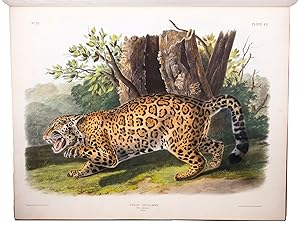
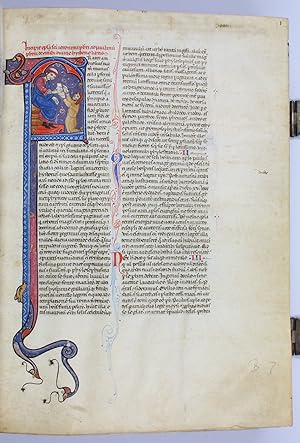
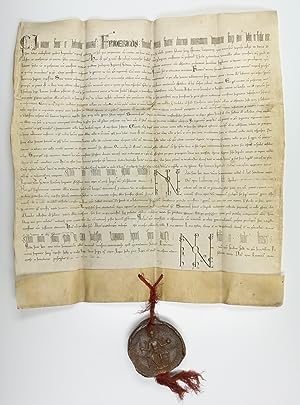
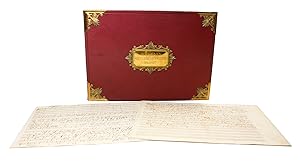
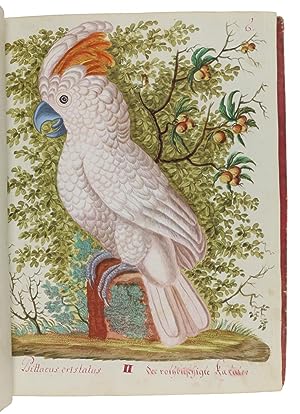
![Imagen del vendedor de [Lectura Infortiati]. a la venta por Antiquariat INLIBRIS Gilhofer Nfg. GmbH](https://pictures.abebooks.com/inventory/md/md31174762324.jpg)
![Imagen del vendedor de Autograph musical manuscript of two short works for piano: "All[egre]tto" (24 bars, in contrasting A major and A minor sections), and "Mazur" (14 bars in D minor), signed ("Ch") twice at the end of each piece. a la venta por Antiquariat INLIBRIS Gilhofer Nfg. GmbH](https://pictures.abebooks.com/inventory/md/md30844768352.jpg)
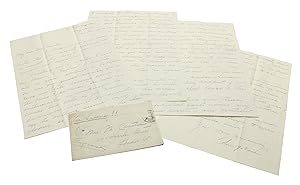
![Imagen del vendedor de [Liber horarum - Use of Rouen]. a la venta por Antiquariat INLIBRIS Gilhofer Nfg. GmbH](https://pictures.abebooks.com/inventory/md/md31786852342.jpg)
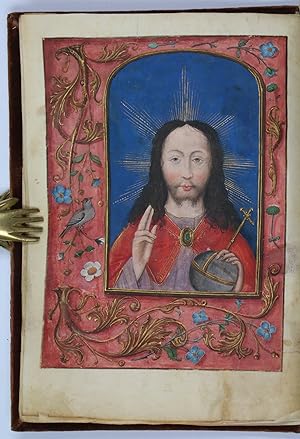
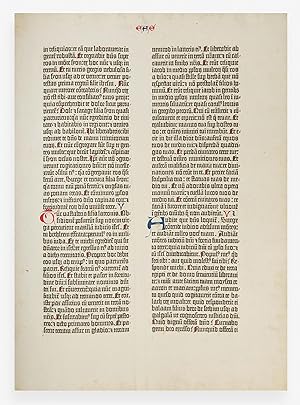
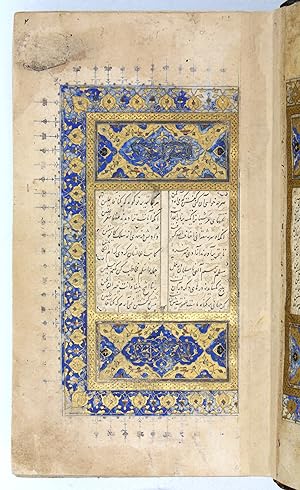
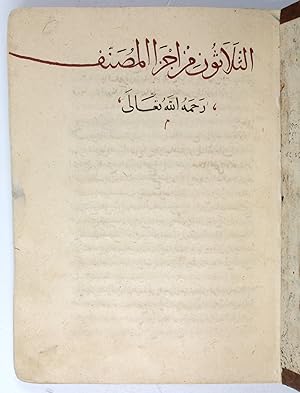
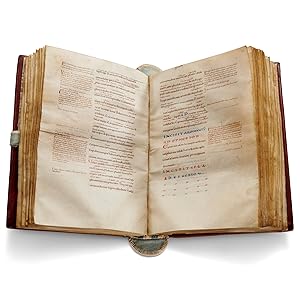

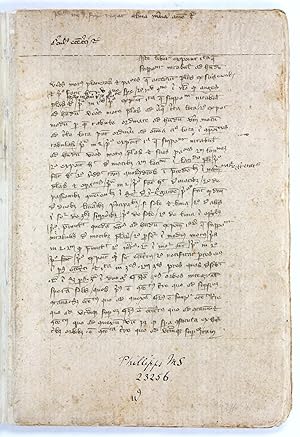

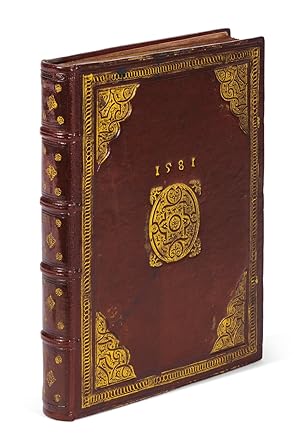
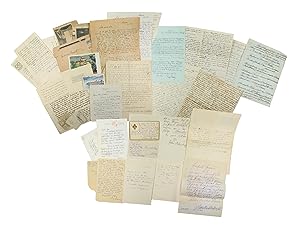
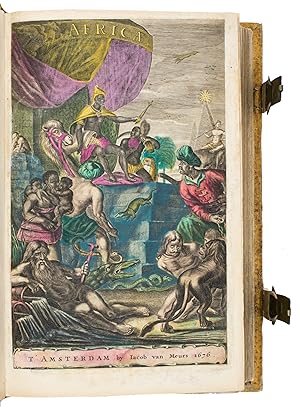
![Imagen del vendedor de Timur-nama [The History of Timur]. a la venta por Antiquariat INLIBRIS Gilhofer Nfg. GmbH](https://pictures.abebooks.com/inventory/md/md31366992830.jpg)
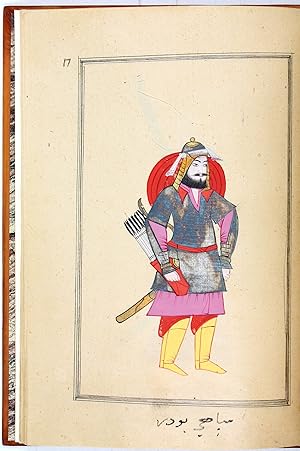
![Imagen del vendedor de Notizie, ed aventure veridiche di un viaggio intrapreso da una persona di condizione privata [.] di Urbino [.], sino a Costantinopoli; e del ritorno suo [.]. a la venta por Antiquariat INLIBRIS Gilhofer Nfg. GmbH](https://pictures.abebooks.com/inventory/md/md15331914398.jpg)
